This website uses cookies to improve your browsing experience and analyze the use of the website. Learn More


How to Take a Tour of Olympic Stadium in Berlin

This post will give you an introduction to Berlin’s historic 1930s-era Olympic Stadium or ‘Olympiastadion.’ We will also include recommendations on tickets and how to plan your visit, along with some details about what you can expect to see on a tour of the stadium.
Ticket Information
Plan your visit.
- Guided Tours
What You’ll See
- Free Tours By Foot
The original plans for the Olympic Stadium were spurred by Germany’s winning of the license to host the 1916 Olympic Games, thus ensuring plans would be set for a stadium in Charlottenburg, nestled within the area’s Grunewald Forest.
However the games were canceled due to WWI, and thus the foundations of a ‘German Sports Forum’ on the eventual building site were left untouched for years.
In 1931, Germany was selected a second time, this time giving the Nazi Party an opportunity to spread its propaganda to a wider audience when they came into power in 1933.
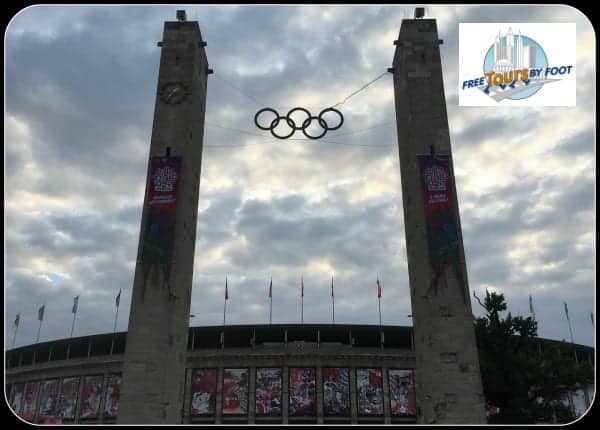
Adolf Hitler placed architect Werner March in charge of the building of an enormous sports complex named ‘Reichssportfeld’, including an entirely new stadium.
Construction took place between the years of 1934 and 1936. Ultimately covering 132 Hectares (326 acres) of land, the complex included various additional sporting venues such as the 50k capacity Maifeld, the 25k capacity Waldbühne amphitheater, and finally the 110k capacity Olympiastadion, complete with a special stand for Adolf Hitler and his entourage.
The only significant part of the complex to be destroyed during the war was the Bell Tower, a 77-meter tall spectacle used as an observation deck by officials. This tower contained the Olympic bell, originally designed for the 1936 Olympics. It was rebuilt by architect Werner March in 1962 using the original design.
During the final battle of WWII, the Soviet army fought to gain control of the stadium, but there wasn’t much damage caused at the time. After the fall of Hitler's Third Reich in WWII, the stadium was briefly used as barracks for the British army, who used the Bell Tower for anti-tank target practice, as it fell within the British-run section of West Berlin.
Since then, Olympic Stadium has become the official home of Berlin's Hertha BSC soccer team and hosts the annual German Cup.
Back to Top
If you want to take a tour of the Olympic Stadium, the price of admission will be included with your ticket price. You can find more information about the cost of this tour in our tour information section .
For those who would rather just visit Olympic Stadium without taking the tour, you are free to purchase standard admission and take a look around at your leisure.
That said, it is important to note that there are some areas you cannot visit without a professional tour guide.

TIP: Admission to Olympic Stadium is included for free with the Berlin Pass . If you plan on seeing other famous sites in the city, this is a great way to save money on several different activities.
Self-Guided Tour Tickets
- €8/Adults | €5.50/Concessions
- €4/Children (6-14 years old)
- €16/Family Card (2 adults and 3 children)
- Concession pricing is available for students, disabled people, and groups of 10 or more visitors
Purchase or learn more about Olympic Stadium tickets
For an additional €2 per person, you can get a multimedia guide. This guide is available as an app and headset which – in conjunction with your phone – function as a GPS.
The entire audio tour will last between 75-100 minutes, so even if you can’t make the guided tour, you can still learn a lot about the stadium while you’re here.
Multimedia guides are accessible until 2 pm from November - March until 4 pm from April - October, and until 5 pm in August.
They are also included for free when you purchase your tickets ahead of time .
Along with the tours offered at Olympic Stadium, you can also purchase tickets for the nearby Bell Tower (Olympia-Glockenturm) to get an incredible view of both the venue and the city of Berlin. Admission for this attraction is very reasonable, but it is a separate cost which you will have to pay for individually.
- €5/Adults | €3/Children
- €4/Groups of 10 or more
- €3.50/Students
- Purchase or learn more
TIP: If you’re more interested in seeing various sites around the city center, you may want to consider an alternative observation deck such as Panoramapunkt , Berliner Dom , the TV Tower or the Reichstag Dome .
Olympic Stadium also offers tours on days when there are no other previously scheduled events. These tours will allow you to see locations that are usually off-limits to self-guided visitors. If you want to experience more of the stadium and learn more about its history, this tour is an excellent opportunity.
The cost of admission is included in the price of this tour.
Highlight Tour Tickets
- €11/Adults | €9.50/Concessions
- €8/Children (6-14 years old)
- €24/Family Card (2 adults and 3 children)
Purchase tickets for the Highlight Tour
This is the most frequent tour offered at Olympiastadion, but there are a few others you may want to consider. For more details about both the highlight tour and other excursions, make sure to read our tour information section .
This section will provide a plethora of information to make your trip as fun and easy as possible. We will include information about hours of operation, best times to visit, what to expect and how to get there.
Hours of Operation
If you plan on seeing a game or attending an event at the Olympic Stadium, the hours of operation will depend upon the organizers of that event. Guided tours of the stadium won’t be available on these days. If you are interested in taking the tour, you can expect the following hours.
- Stadium Hours: 9 am - 7 pm
- Tour Hours: 10 am - 6 pm
- Tours are offered hourly
- Tour hours may vary
During some days and at certain times of the year, tour availability may be reduced to once every two hours. For more details on opening hours, make sure to check the official Olympic Stadium hours of operation .
If you want to visit the nearby Bell Tower (Olympia-Glockenturm) as well, you can expect slightly different hours.
- 9 am - 8 pm
- 9 am - 6 pm
For more details about the Bell Tower, visit our ticket information section .
To learn more about Olympic Stadium tours, please read our tour information section .
Best Times To Visit
Visitors who are planning to come for the stadium tour probably won’t have to worry about large crowds. Due to the fact that they don’t offer these tours during special events and game days, you’ll always be visiting during off hours when few people are likely to be in the stadium.
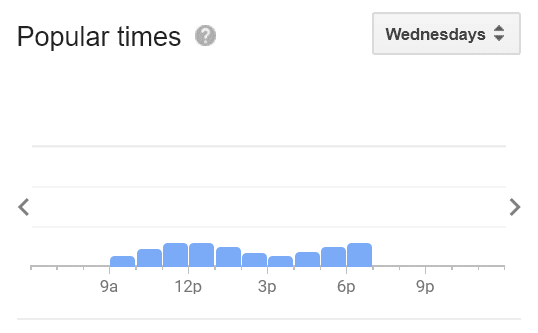
As you can see, there really aren’t any bad times to come during weekdays. Most major events take place on or around the weekends, so you can expect a much larger crowd at those times.
Tour groups are kept to a maximum of 30 guests, so you can rest assured that you probably won’t have much trouble getting around during this activity.
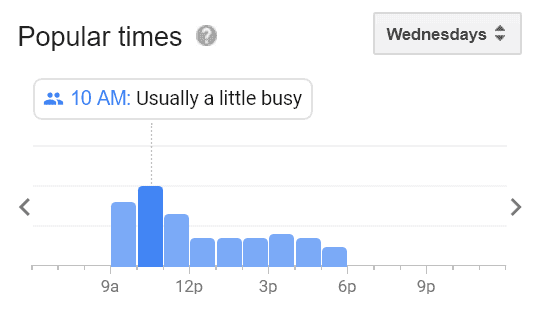
If you plan on visiting the nearby Bell Tower (Olympia-Glockenturm), you can expect things to get crowded every now and then. In particular, the late morning appears to be a very popular time for this attraction.
Sunset is one of the best times to visit the Bell Tower, as it isn’t very crowded and you’ll have the opportunity to enjoy wonderful views of the city and Olympic Stadium.
What To Expect
You are greeted upon entrance to the visitor center with an introductory film (in English). After this, you will be allowed access to explore the stadium yourself or potentially take a guided tour if there are open spots.
Not only do their guided tours provide historical information about the location, but you will also be allowed to visit certain places that are off-limits to visitors who choose to explore the stadium on their own.
If you want to visit the stadium’s Bell Tower (also known as Olympia-Glockenturm), you will need to pay an additional €5 for admission to the site. This service is separate from the Olympic Stadium tour and you will need to purchase another ticket for it. The Bell Tower offers exciting views across the stadium and the city of Berlin.
TIP: Visitors looking for an alternative may want to consider going to an observation deck such as Panoramapunkt , Berliner Dom , TV Tower or the Reichstag Dome .
Olympic Stadium tours will take about one hour, but you could spend even more time looking around on your own. As a result, you should plan on being here for between 1-2 hours .
If you plan on visiting the Bell Tower as well, you should set aside another 30-60 minutes for that activity.
One of the few persistent complaints about the stadium is the refreshment prices; a single small coffee costs €3.10. If you plan on going during lunch time, consider getting something to eat either before or after your trip to Olympic Stadium. Unfortunately, outside food is usually not allowed inside Olympiastadion.
If you would like to consider attending a major event such as a sports match or concert at the stadium, check out their official website for event dates.
Online reviews state that the atmosphere tends to be very exciting when Berlin’s local soccer team Hertha plays, though many reviewers criticise the sound quality of concerts. One occasional criticism online is that smoking is allowed inside the venue, which may be a nuisance to some visitors.
No bags of any kind are allowed inside the stadium, and according to online reviews, the wait to rent a locker for one's bag can take some time. If you want to avoid the wait altogether, consider using one of the many bag storage services available in Berlin .
Visitors should also be aware that – like many Berlin venues – Olympic Stadium is a cash-only venue, so be sure to visit an ATM beforehand.
All significant areas are wheelchair-accessible, but there are no wheelchair rentals available on-site. Prams are allowed in the stadium, but it is important to note that you may need to carry them up some stairs depending on where you want to go.
Photographs are allowed for private use, but you will not be allowed to take photos for commercial use unless you obtain permission from the press office. You will not be allowed to record the entire tour.
How to get to the Olympic Stadium
Olympic Stadium is accessible by various modes of public transportation, each of which leaves visitors with a short, clearly signposted walk to the gates.
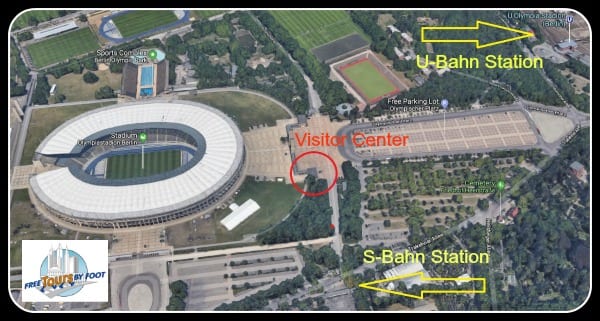
The under and overground train station ‘Olympiastadion’ is served by the U2 U-Bahn line and S9 S-Bahn line. Each line provides direct travel times of roughly half an hour from central Berlin stations such as Friedrichstraße and Alexanderplatz.
If you look at the map above you will see that the U-Bahn and S-Bahn exits for the station are in separate locations. The ‘P’ denotes parking.
Tour Information
Whenever there are no scheduled events, Olympic Stadium offers fully guided tours. Depending on when you choose to visit, tours will take place either hourly or once every 2 hours.
No matter when you choose to arrive, you’ll have the opportunity to look around many of the open areas of the stadium at your leisure both before and after the tours. For more details on hours of operation, check our plan your visit section .
English-language tours which last between 60-75 minutes can be booked either ahead of time or on-site. If you want to avoid sold out tours, you should purchase your tickets before arriving.
Apart from the highlight tour, there is also a premium option which lasts for a total of 2 hours and includes a guided walk through Olympiapark. If that isn’t of interest, you may also want to consider their Hertha BSC tour which focuses on the football team that calls this stadium home.
Premium Tour Tickets
- €13/Adults | €11.50/Concessions
- €10/Children (6-14 years old)
- €28/Family Card (2 adults and 3 children)
Purchase tickets for the Premium Tour
Hertha BSC Tour Tickets
- €12/Adults | €10.50/Concessions
- €9/Children (6-14 years old)
- €26/Family Card (2 adults and 3 children)
Purchase tickets for the Hertha BSC Tour
These tours are not as frequent, so you will definitely need to purchase them well in advance in order to secure your spot.
If you want to learn more about the history of the Olympic Stadium and how it has been used, there is a 6-hour tour-by-bus you may want to consider. This tour will take you from Berlin to Olympiastadion in a VW Bus, explaining some of the histories about the location along the way. Once you’re there, you will learn about what happened during the Olympic games which were held here in 1936. Entrance fees are not included.
Olympic Games 6-Hour Tour
- €101 per person
- Duration: 6 hours
- Tours start at 9:30 am
There are a lot of different things to see at the Olympic Stadium. In addition to the main building, there are several attractions and notable landmarks around Olympiastadion as well. This section will discuss a few of the more notable items you might want to see while you’re here.
Bell Tower (Olympia-Glockenturm)
After being demolished in 1947 as a result of WWII, this tower was rebuilt and designed as pretty much an exact replica of the original in 1963. You can still visit the top of the tower today, but a separate ticket will be required to gain entry. For more details, check our ticket information section .
Langemarck Hall
Located right outside the park, this WWI memorial pays tribute to 80,000 young soldiers who were killed during a battle in the Belgian village Langemarck on November 11th, 1914. There is an exhibition about this event in the basement of this hall.
The Horse Tamers
These statues were created by Josef Wackerle, one of the most important artists during the rule of the Third Reich. Found right outside the stadium, these sculptures can be seen facing in the direction of the Bell Tower and looking out across the Maifeld.
The Olympic Bell
Even if you’re not interested in paying more to see the top of the Bell Tower, you should definitely take a good look at the original bell from this site. The original Olympic bell featured a design with the olympic rings and an eagle, as well as the motto ‘I call the youth of the world’ and two swastikas.
Goddess of Victory
This sculpture of the Greek Goddess Nike can be found near the Saxon Gate. Designed by Willy Mellers, this is one of the bigger statues near the stadium. In her right hand, she holds out a bundle of oak leaves – a German symbol for Victory.
Wall of Fame
Take a moment to learn about some of the more historic moments that have happened here with the help of this Wall of Fame. This installation includes 75 years of sporting history which has taken place at Olympiastadion.
Relay Runner & Discus Thrower
Standing 7 meters tall, these statues can be found surrounding the outer walking path around the stadium. Designed by Karl Albiker, they are both an excellent example of the type of artwork that was fairly prevalent during the early days of National Socialism in Germany.
Olympic Gate
This is the original gate into the stadium, and the Olympic rings can still be seen hanging above. On either side of the gate, there are two pillars with clocks representing two of the German tribes – one named the Bayernturm and the other Preussenturm.
Choose a Destination... I want them all PLUS general travel tips. Amsterdam Berlin Boston Charleston Chicago Dubai Lisbon London Los Angeles Miami Nashville New York City New Orleans Paris Philadelphia Prague Rome San Francisco Washington DC
About The Author
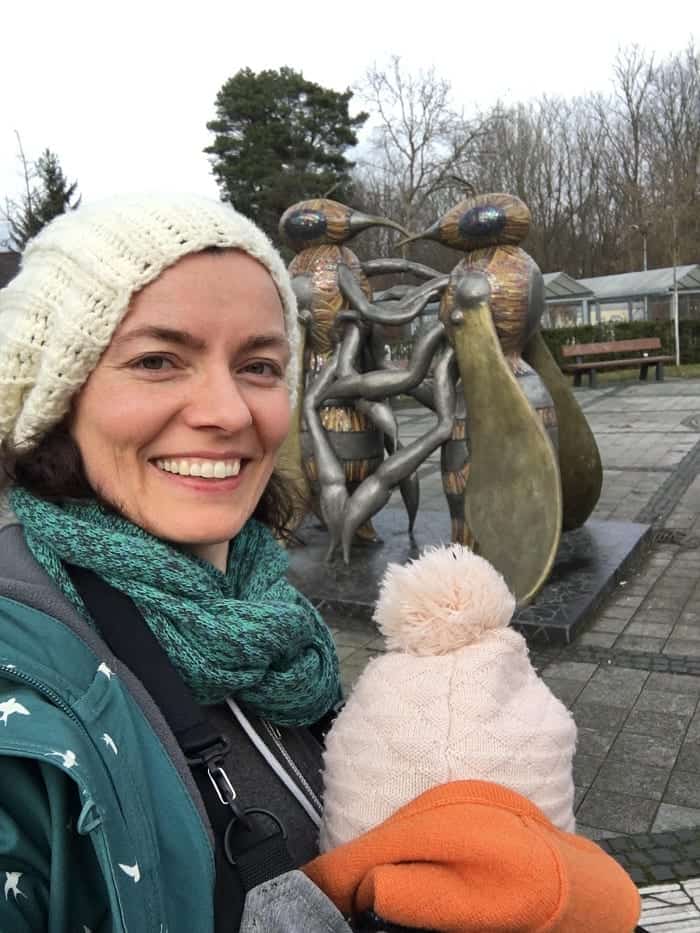
Anne Wittig
North america, united kingdom & ireland, middle east & india, asia & oceania.

- Attractions
- Berlin TV Tower
- Alexanderplatz
- Museum Island
- Checkpoint Charlie
- Reichstag Building
- Arrival in Berlin
- Public Transport
- Best City Pass
- Lifestyle Guide
- Shopping Guide
- Restaurant Guide
- Nightlife Guide
- Central Station
- Districts in Berlin
- 3 Days Itinerary
- Conference Hotels
- Central Hotels
- Wellness Hotels
- Trade Fair Hotels
- City Guides
- Executive Transfers
- Conference Rooms
- Plastic & Aesthetic Surgery
- Wrinkle Treatment
- Injectable Dermal Fillers
- Plasma Therapy
- Mesotherapy
- Skin Renewal
- Non Surgery Operations
- Tours & Tickets
Guide to the Olympiastadion Berlin: Information & Tickets

Built by the Nazis for the 1936 Olympic Games, the Olympiastadion Berlin is now an open-air venue for events of all kinds.
During a visit, you can get an idea of today's stadium as well as explore the past of the historic site.
In this guide, you will find out everything you need to know before visiting the Olympiastadion in Berlin, its history, as well as helpful visitor information.
Let's begin!

Things to do at the Olympiastadion Berlin
The Olympiastadion Berlin in the Westend district is a modern yet historic multi-functional arena. With around 300,000 visitors annually, it is one of Berlin's top sightseeing attractions .
1. Guided Tours of the Olympiastadion Berlin
If you want to delve deeper into the history of the Olympiastadion Berlin, you can join a guided tour to take a look behind the scenes and see places that the public doesn't get to see.
Not only will you learn all about the past and architecture of the historic site, but also about the highlights of sports history that were written here, such as the 2006 FIFA World Cup.
A guide will lead you through the Olympiastadion Berlin with expert information, and some tours also include the Olympiapark . Others focus on the Hertha BSC premises or look at the technology of the multifunctional arena.
Tip : A clear recommendation is the 60- to 75-minute highlight tour. The tour includes a visit to the locker rooms, the underground training hall and the VIP lounges.
2. Sightseeing Tour without a Guide
Those who prefer to explore the Olympic Stadium on their own can buy a time slot ticket to visit the stadium without a guide . Climb the stands of the Olympiastadion Berlin and enjoy the view of the empty stadium from the very top.
Head to the surrounding Olympiapark Berlin and follow the walking trail of history , which provides information about the past of the historic site. A total of 45 panels and displays in German and English give detailed information about the former "Reichssportfeld" and other special features.
For a small extra charge, you can rent a multimedia guide at the Olympiastadion Berlin visitor center. It leads through the area in 75 to 100 minutes and is available in German, English, Spanish, French and Italian.
- Important : When visiting without a guide, it is not possible to see the non-public areas, such as the players' cabins or VIP areas.
3. Attractions on the Site of the Olympiastadion Berlin
There are numerous buildings, sculptures and relics on the Olympic grounds that tell of the site's eventful history.
Here is a brief overview:
- (Olympic) Bell Tower : You can easily reach the observation deck of the Bell Tower near the stadium by elevator. For a small fee, it offers a wonderful view from Spandau to Alexanderplatz and, on a clear day, even as far as Potsdam and the Müggelberge mountains.
- Langemarck Hall : A few steps away from the bell tower is this memorial commemorating a World War I battle. The basement houses the exhibition "Historical Site Olympic Grounds 1909 - 1936 - 2006".
- Olympic Bell : The bell of the bell tower, formerly the Olympic Bell Tower, weighing several tons, fell onto the forecourt when the tower was blown up and was later buried by British soldiers. Today, the Olympic Bell, which was recovered in 1956, stands on the south side of the stadium, and the bell tower received a new bell in 1962.
- Waldbühne : The Waldbühne, venue of the 1936 Olympic gymnastics competitions, was inspired by ancient amphitheaters and today serves as an open-air stage for concerts.
- Maifeld : The Maifeld was created by the Nazis as a place for propaganda events.
- DFB Wall & Walk of Fame: The 40-meter-long graffiti presents the most important stages in the history of the Olympiastadion Berlin.
4. Events at Olympiastadion Berlin
Many events are held at the Olympiastadion Berlin every year. These include Hertha BSC home games, sporting events, concerts and many other major events.
- You can find an overview and tickets for the current and upcoming events here .
- If you have already bought a ticket or would like to buy one, you can view the seating plans here to check which block you are in.

Entrance, Tickets & Tours for the Olympiastadion Berlin
- Entrance : Olympiastadion Berlin is open daily. From November to March it is open from 10:00 -16:00; from April to October from 9:00 - 19:00. In August, the opening hours are 9:00 am - 8:00 pm.
- Tickets : Tickets for the self-guided sightseeing are available at the Visitor Center in front of the stadium. Tickets for the Bell Tower can be purchased at the tower ticket office.
- Tour : Since there is limited availability of guided tours, we recommend purchasing tickets online in advance. Online tickets for the Olympiastadion Highlight Tour are available here . Prices and dates for the other themed tours can be found on the official website .
- Travelers' Tip: If you want to discover the top attractions of the German capital in a very flexible way and on your own, we recommend the audio guide app Best of Berlin Tour by YourMobileGuide .

How to get to the Olympiastadion Berlin?
The Olympiastadion Berlin has two entrances: the East Gate entrance and the South Gate entrance .
- From Alexanderplatz : Take the S-Bahn S3 or S9 and get off at the stop "Olympiastadion". You will reach the South Gate entrance via the Flatowallee exit after 200 meters, and the East Gate entrance via the Trakehner Allee exit after 250 meters.
- From Potsdamer Platz : Go 14 stops on the U-Bahn line U2 to the "U Olympia-Stadion" stop. The East Gate entrance is about 500 meters away and the South Gate entrance is 870 meters away.
FAQ about the Olympiastadion Berlin
IN WHICH DISTRICT IS THE OLYMPIASTADION BERLIN LOCATED?
The Olympiastadion Berlin is located in the district Charlottenburg-Wilmersdorf in the Westend neighborhood. The address is: Olympiastadion Berlin, Olympischer Platz 3, 14053 Berlin
WHAT IS THE CAPACITY OF THE OLYMPIASTADION IN BERLIN?
The Olympiastadion Berlin has a seating capacity of 74,475, of which 38,020 are on the lower ring and 36,455 on the upper ring.
WHAT IS THE HEIGHT OF THE OLYMPIASTADION BERLIN?
The height of the Olympiastadion Berlin is 16.37 meters, with attic it is 21.26 meters.
WHO BUILT THE OLYMPIASTADION BERLIN?
When Berlin was named the site of the 1936 Olympic Games in 1931, the Nazis immediately recognized the prestige value of this international event and arranged for the planning of the Reichssportfeld , now the Olympiastadion. The architect Werner March was commissioned.
WHEN WAS THE OLYMPIASTADION BERLIN BUILT?
The Olympiastadion Berlin was built between 1934 and 1936 according to the plans of the architect Werner March on the occasion of the 1936 Summer Olympic Games. Before that, the "German Stadium" and the "Sports Forum" were located on the site. The opening took place on August 1, 1936.
WHO OWNS THE OLYMPIASTADION BERLIN?
The Olympiastadion Berlin is administered by the State of Berlin.

History & Facts about the Olympiastadion Berlin
The area was once home to a horse racing track, and during the times of the German Reich the "Deutsches Stadion" (German Stadium) and the "Sportforum" (Sports Forum) were built.
After Berlin was named the site of the 1936 Summer Olympics in 1931, the Nazis considered it highly prestigious and arranged for the buildings to be converted into the "Reichssportfeld". It was built from 1934 to 1936 according to the plans of the architect Werner March. By 1936, a symmetrical complex had been created with the Olympic Square, the Olympiastadion for 110,000 spectators, the Maifeld, the Bell Tower, the swimming stadium, the Waldbühne for 25,000 spectators and a parade ground for 500,000 people with a "Führer's Stage".
In the period after the Second World War, the area served the British occupation forces. After the denazification of the stadium in 1957, the former Reichssportfeld was listed as a historic monument a few years later. From 2000 to 2004, the Olympiastadion Berlin was modernized. It received 74,475 covered seats and continuous floodlighting.
Today, the Olympiastadion Berlin is a venue for events, concerts and sporting events as well as the home ground of the Bundesliga soccer team Hertha BSC. In 2006, the World Cup final and in 2015 the Champions League final took place here. Every year, the stadium hosts the final of the DFB Cup.
Contact & Map
- Address : Olympiastadion Berlin, Visitor Center, Olympischer Platz 3, 14053 Berlin.
- Opening Hours: Nov. - March 10am - 4pm; April - Oct. 9am - 7pm, August: 9am - 8pm
- Public Transport: S-Bahn: S5 to "Olympiastadion"; U-Bahn: U2 to "U Olympia-Stadion".
- Website : Olympiastadion.Berlin

By loading the map, you agree to Google's privacy policy. Learn more
Always unblock Google Maps
Related Articles:
26 extraordinary attractions in berlin [with tickets], 27 things to do for kids in berlin [with map & tickets], hitler in berlin: 17 imposing remnants of the “third reich”, top 50 things to do in berlin [+ tickets].
- teilen
- teilen
- merken
Berlin Trabi Safari XXL Tour
trabi museum, berlin: private minivan group tour., berlin: 1-hour historical city tour from the nikolai quarter, the manhunt in mitte: interactive mystery hunt in berlin (in english only), berlin: 2.5-hour dinner cruise on the ms der fliegende holländer berlin, city circle berlin: hop-on hop-off city tour, berlin greatest escapes exploration game, city sightseeing berlin: hop-on hop-off city tour - classic route, potsdam: 4-hour sea cruise.
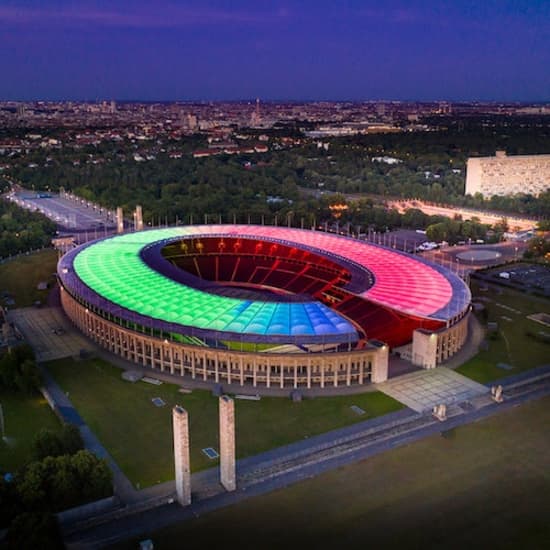
Berlin: Olympic stadium tour (guided or independent)
⭐ Berlin: Olympic Stadium tour (guided or independent) . Explore the legendary Olympiastadion Berlin on your own or with a guide!
Tickets 🎫 Guided sightseeing tour: Adult (15+) - one-way ticket 🎫 Guided sightseeing tour: Child (6-14) - one-way ticket 🎫 Guided sightseeing tour: Reduced - single ticket* *Pupils, students and trainees, severely disabled persons, BFD participants, unemployed persons, ALG II recipients (each with valid ID)
Highlights 🔍 Discover the Olympiastadion Berlin, one of the city's most famous attractions, either with a live guide or on your own ⚽ Explore the site of the infamous 1936 Summer Olympics and celebrate Berlin's hosting of the 2006 FIFA World Cup 🏟️ Experience the history and architecture of the Olympic Stadium up close and admire the grandstands and outdoor areas
📍 Location: Olympic Stadium Berlin
📅 Date and time: Date and time Select your desired date(s)/time(s) directly in the ticket selector
⏳ Duration : ⏳ Duration 1 hour
❓ The following applies to this experience: All sales are final. and tickets can’t be refunded, changed or modified For further information, please consult our GTC
Description Discover the breathtaking Olympiastadion Berlin, one of the absolute top attractions in Berlin! Immerse yourself in the fascinating history of the famous 1936 Summer Olympics and experience the glory of the legendary 2006 FIFA World Cup up close. Simply decide for yourself whether you would like to be accompanied by an expert guide or would prefer to visit the stadium on your own. Let yourself be enchanted by the VIP areas, the players' cabins and all the other exciting places! An absolutely unforgettable experience awaits you here! Come along and be part of this impressive story.
- You can either take part in a guided tour or go exploring on your own.
- It is permitted to take a baby carriage with you, but please note that you will have to walk up some stairs on site.
- There are no storage cupboards on site.
- The ticket does not grant access to the pitch or the race track.
- To enter the Visitor Center entrance, you can simply use your smartphone ticket.
- The venue is barrier-free accessible.
How to get there?
Olympiastadion Berlin
Olympischer Platz 3, Berlin, 14053
Sorry, JavaScript must be enabled to use this web app
Olympiastadion Berlin
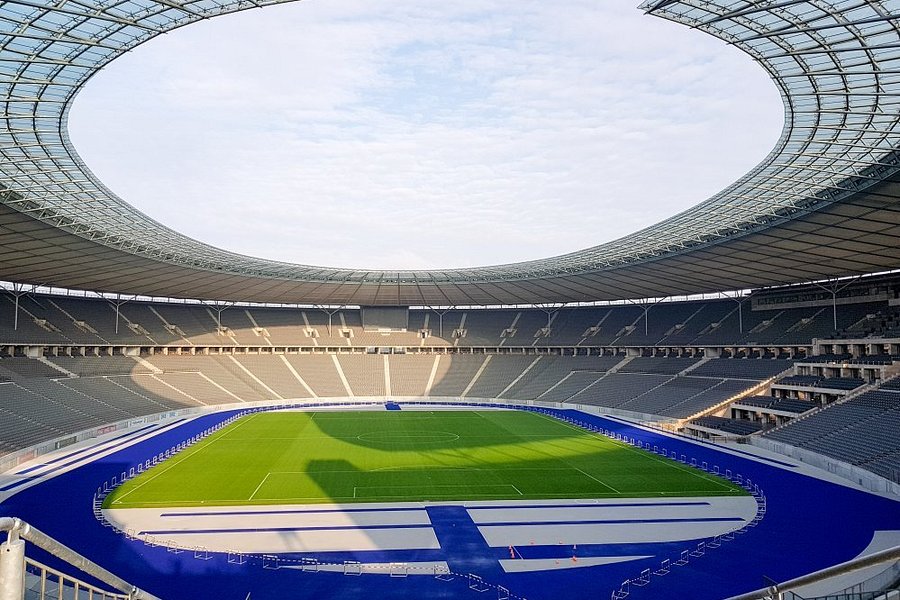
Top ways to experience Olympiastadion Berlin and nearby attractions

Most Recent: Reviews ordered by most recent publish date in descending order.
Detailed Reviews: Reviews ordered by recency and descriptiveness of user-identified themes such as wait time, length of visit, general tips, and location information.
Also popular with travelers
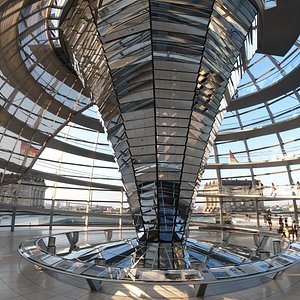
Olympiastadion Berlin - All You Need to Know BEFORE You Go (2024)
- City Sightseeing Berlin Hop-On Hop-Off Bus (From $27.12)
- Private Day Tour of Wannsee and Potsdam from Berlin (From $433.98)
- 5hours: Guide, Chauffeur & Photographer in Berlin private Tour (From $640.13)
- Berlin Private Full-Day Tour by Car (From $705.22)
- Football Tour EURO 2024 (From $27.12)
- (0.91 mi) Hotel Rotdorn
- (0.49 mi) Westlife Apart Hotel Berlin
- (1.73 mi) Hotel Brandies
- (2.92 mi) Hotel Louisa's Place
- (4.19 mi) Mittendrin - Boutique Hotel Berlin
- (0.19 mi) Olympia Eck
- (0.22 mi) Stadionterrassen
- (0.29 mi) Preussisches Landwirtshaus
- (2.26 mi) Restaurant Buschbeck's
- (2.63 mi) Focaccino
- (0.12 mi) Sommerbad Olympiastadion
- (0.25 mi) Museum West Alliierte in Berlin e.V
- (0.29 mi) Waldfriedhof Heerstraße
- (0.34 mi) Unité d'habitation, Le Corbusier
- (0.47 mi) Berliner Waldbüehne

Olympiastadion – Berlin Olympic Stadium Tour
The Olympiastadion hosted the 1936 Olympic Games, also known as Hitler’s Olympics. Today, the Olympic village remains and it’s also the home of Hertha Berlin football team. Things to see at the Berlin Olympic Village include;
- Host Stadium of the 1936 Olympic Games
- 2006 World Cup Final Venue
- Largest Stadium in Berlin
Nazi Architecture
Olympic bell tower.
- 1936 Berlin Olympic Torch and Commemorative Plaque
- Olympic Swimming Pool Arena
The Olympiastadion is served by both the S-Bahn as well as the U-Bahn train routes. As a result it’s easy to reach the stadium wherever you choose to stay in Berlin .
Where is the Olympic Stadium in Berlin?

You can reach Olympiastadion via S-Bahn stations S-3 or S-9, alternatively the U-Bahn station U-2 also serves the stadium. All of these stations are appropriately named, Olympiastadion. If you’re in Berlin specifically to visit the stadium I recommend Berlin hotels near Olympic stadium .
Berlin Olympic Stadium

The Olympiastadion has a capacity of 74,475 spectators. As a result it’s the third largest stadium in Germany after Signal Iduna Park and the Allianz Arena. It’s the home of Hertha Berlin and the German national team often play here. Additionally, famous artists who have performed here include; Michael Jackson, Rolling Stones, U2, Tina Turner, Beyonce and more recently, Ed Sheeran. Historical events here include the 1936 Olympics, 1974 and 2006 World Cups as well as the 2009 Athletics World Championships. Lastly, the highest ever attendance for a basketball game worldwide is over 100,000 at the Olympiastadion during the 1936 Berlin Olympics.
Berlin Olympic Stadium Tour – Meeting Point

The stadium tour starts from the Olympic Stadium Berlin Shop. It’s to the left of the iconic entrance to the Olympic Park. Here is the exact location . What is the Berlin Olympic Stadium cost? You have 2 options for an Olympic Stadium Tour. Firstly, you can take a guided tour but unfortunately they are infrequent. Secondly, you can simply enter the stadium independently on a self guided. Finally, you can book a self guided tour online in advance .
Podbielski Oak Tree

You would be forgiven if you missed the oak tree adjacent to the stadium entrance. But, it would also be a shame to miss it and learn about its purpose. Why is there a random oak tree within the stadium grounds? It’s named Podbielski after the former president of the German Olympic Committee. Viktor von Podbielski was one of the original planners of the Olympic Village and the tree was left to honor his legacy.
Olympic Running Track

The Olympiastadion Berlin has an impressive running track. As a matter of fact it’s the largest athletics stadium in Germany. Did you know the largest stadium in Berlin which sole use is football belongs to FC Union Berlin ? Finally, Usain Bolt ran the world record 100m and 200m on this track.
1936 Berlin Olympic Games Olympic Torch

The Summer Olympics Torch Relay is the action of taking the olympic flame from Olympia, Greece to its host city. It was the 1936 Berlin Olympics where this tradition first began. The flame was brought from Olympia to the Berlin Olympic Torch which remains a monument in this huge stadium today. Both this event as well as the Olympics themselves are documented in the 1938 movie, Olympia .
1936 Berlin Olympic Games Commemorative Plaque

All of the gold medal winners from the 1936 Berlin Olympics are displayed on a commemorative plaque within the stadium. In addition, there are plaques which honor the architects of the Olympic village.
Jesse Owens

The Jesse Owens story became an important part of Olympic history. Hitler originally banned all Jews and people of African descent from competing. However, due to the threat of a boycott of the Olympics, he let all athletes compete. Jesse Owens was of African descent and he went on to win 4 gold medals. As you would imagine, Hitler was not happy with this result. There’s a movie called Race , which documents this historic event. Lastly, as I am British, I couldn’t help but search for members of Team GB on the commemorative plaque. There are a few and one such entry is Harold Whitlock who won the gold medal for the 50 km walk.
VIP and Media Seats

If you take the guided tour of the stadium you can sit in the VIP section. Otherwise, it’s still possible to view it from a distance. Above the VIP seats is the media section. Imagine how busy this was during the 2006 World Cup final! Even more so during the infamous Zidane headbutt incident.
Olympic Stadium Berlin Hitler

The stand which Hitler stood at in the Olympiastadion has been removed. It could have been removed during renovations or it could have been removed as it was an unwanted reminder of his reign. Another reason it may have been removed is because the Berlin tourist board didn’t want tourists recreating his infamous salute. However, for those who wish to see how it once was, you’ll find a poster outside the press entrance.

As you walk throughout the Olympic village, take note of the rare examples of Nazi architecture. Another place in Berlin with surviving architecture from this period is the abandoned Tempelhof Airport .

The Olympic Bell Tower is an imposing structure which looks over Olympiastadion. What’s more, you can ascend the tower for panoramic views of the Olympic Village. After World War II, Soviet soldiers accidently set the structure on fire making it unstable. For this reason, the British destroyed it in 1947. During the destruction process, the Olympic Bell crashed to the ground and become unusable. In 1956, the Bell Tower was restored to its original form which is Nazi architecture. Finally, a new bell now hangs in the bell tower.
Olympic Bell

When the Olympic Bell Tower was destroyed in 1947, the bell came crashing down. It cracked but survived the fall. This bell now lies in front of the Olympiastadion as a memorial. Look closely, there’s a Swastika logo on the bottom of the bell.
Horse Holder Statues – Nazi Era Sculptures

In between the stadium and the Clock Tower are 2 horse holder statues (Rossefuhrer). These were created by sculptor, Josef Wackerle. It’s rare to see surviving Nazi era sculptures.
Relay Runner Sculptures

Maybe Nazi era sculptures are not so rare as there are several examples surrounding the the Olympiastadion. There are a couple of interesting sculptures by Karl Albiker. He designed both the discus throwers as well the relay runners. Another interesting fact is there is a sculpture of the Goddess of Victory, Nike. What makes it more interesting is that Germany became the country of Adidas and Puma!
1936 Olympic Swimming Pool

The diving pool and stadium is not in bad condition considering it dates back to the 1930’s. I can think of more recent Olympic diving pools which are in worse condition!
Hertha Berlin Club Shop

If you require any Hertha Berlin merchandise you can visit the club shop. Furthermore, they also sell matchday tickets in the store. You’ll also find a restaurant, complimentary toilets, in addition to the club shop.
Enjoy your Berlin Olympic Stadium Tour
I recommend at least 2 hours to explore the points of interest I mentioned above. Alternatively, if it’s a few quick pictures in the iconic stadium you require, 30 minutes should be plenty of time. As I mentioned, to get to the Olympiastadion, simply take the S-Bahn or U-Bahn to the Olympiastadion station. From there, you’ll see the stadium. Enjoy!
Check out the London Olympic Stadium which hosted the 2012 Olympic Games. Things to do in Berlin .
Share This Story, Choose Your Platform!
Related posts.

Advantages of Shoulder Season Travel: Discover Europe’s Best in May

Things to Do in Switzerland for Young Travelers

5 Islands to Visit in Europe

How to Travel Europe by Motorhome

The Most Luxury Places to Visit In the UK

Top 6 Places to Visit in the UK with Your Dog

3 Tips For Exploring The North Of England

Reasons to Visit Bordeaux With a Tour Agency

Top 5 English Beach Destinations for 2023

Top European Cities To Visit On Your Next Holiday

3 Top Cities for a UK Getaway (That Aren’t London)

How to Explore London on a Budget

Here are Some of the Best Things to Do in Dorset

The 4 Most Amazing Ski Destinations in Austria

West Highland Way Walk – All You Need to Know
Leave a comment cancel reply.
- Contrast Contrast
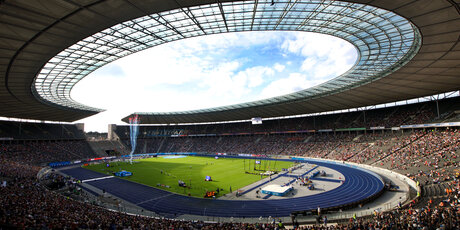
Olympic Stadium in Berlin
Top sporting events and concerts in a historic setting
For local football fans, Berlin’s Olympiastadion means just one thing – the home of the city’s leading Bundesliga club Hertha BSC , fondly dubbed the “Old Lady”. And when those fans get into position on the Ostkurve fan block terrace, they are ready for a roller-coaster of emotions – ninety minutes that can take them from the depths of despair to wild cheering and the joy of another match won. There is a very special atmosphere when 74,475 enthusiastic fans gather in the fully sold out stadium – but the legendary Ostkurve terrace is always reserved for the blue and white colours of the Hertha fans as they fire on their club!
More than just football – Berlin’s Olympiastadion hosts top-flight sporting events and concerts
Berlin’s Olympiastadion is more than just the home venue for the Bundesliga football club Hertha BSC:
- In 2006, the Olympiastadion hosted the World Cup final, and in 2009 the World Championships in Athletics
- In spring, the stadium regularly hosts the German DFB cup final;
- Every September, the athletes in the annual ISTAF international track and field meeting enjoy a rousing welcome;
- In August 2018 athletes fought for medals at the European Athletics Championships in Berlin .
- And even as a recreational athlete, you have the chance to run through this legendary stadium – for example, at such events as the B2RUN or BIG25.
In summer, Berlin’s Olympiastadion is transformed into an open-air stage for the some of the world’s top events. The many legendary bands and musicians playing here over the past years have included such names as the Rolling Stones, Madonna, Robbie Williams, Depeche Mode and Coldplay.
Exploring the history of Berlin’s Olympiastadion
From 1934 to 1936, during the Nazi era, the old stadium on this site was demolished and a new stadium and sports complex built as the venue for the 1936 Olympic Games . Inspired by the clear geometric forms of sports’ arenas in the classical world, architect Werner March created a stadium capable of holding an audience of 100,000 people.
Today’s Maifeld is just one part of the Reichssportfeld (Imperial Sports Arena) planned by the Nazi regime as a site for propaganda events. The sports and events complex constructed for the Olympic Games also included the Waldbühne venue, designed like an ancient amphitheatre. In 1936, the Waldbühne was the site of the Olympic gymnastics competitions. Today, it has become a much-loved open-air concert venue, surrounded by green spaces.
Anyone visiting the Olympic Stadium complex is sure to visit the Glockenturm – the bell tower –, especially renowned for its amazing views. The lift whisks you to the top of the tower for a panoramic vista out across the nearby Maifeld and stadium to the city or over the Waldbühne to the woodlands beyond.
The eleventh Olympic Games took place from 1 to 16 August 1936. After 1936, another 20 major events were held at the Reichssportfeld, including the 1937 German football championship , the state reception for Mussolini and various sports festivals. At the beginning of the Second World War, the Reichssportfeld, which was partially set below ground level, was converted to a bunker, a production site for detonators, a storage area for munitions, food and wine, and a back-up radio broadcasting site.
A history trail on the Olympic site has 45 panels in English and German offering a fascinating insight into the complex’s origins and development down the years, as well as information on the historical art works from the early years of the Nazi regime.
On event-free days, you can explore the impressive stadium itself, either with an audio guide or as part of a guided tour. On live tours, you can also visit sectors normally off-limits to the public, including the locker rooms, underground warm-up halls, and the VIP areas.
Visit the Olympic Stadium
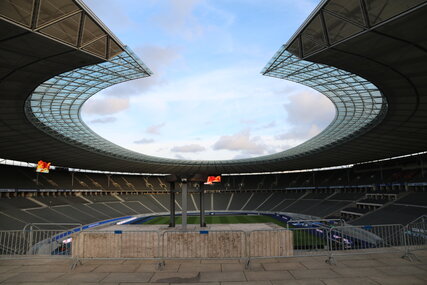
The reopening
At the turn of the millennium, extensive modernisation work began while the sporting events continued. The lower ring was renovated and 13 luxury boxes were added to the upper ring. Today, the total capacity is 74,475 seats . On 1 August 2004, there was an official reopening ceremony for the Olympiastadion. Without doubt, one of the highlights in the history of the new Olympiastadion Berlin was its hosting of the 2006 World Cup Final. Th e German Cup Final has been held here since 1985, and it is the home stadium of Hertha BSC in the Bundesliga.
How to get to the Olympiastadion and more details
Generous parking is available on non-event days. During major concerts and sporting events, parking is limited. The stadium can also be reached quickly and conveniently by public transport on the U2 line, the S5 S-Bahn line or a number of bus lines.
Olympiastadion Berlin Visitors’ Centre
The Olympiastadion is not just an attraction for football fans. Many people are familiar with the five-star stadium from television as venue for sports events and concerts. With the guided tour, you can take a look behind the scenes at the stadium and its facilities.
Have you ever been in a dressing room?
With or without a guide – everyone can explore the stadium in their own way. There are various panels with information about the Olympiapark site. For those who want to take a peek inside the players’ dressing rooms and the VIP area, there’s a 60-minute guided tour. Your guide is certain to have some inside information which will surprise even football experts. There is a special tour for Hertha fans to find out all about their club. Tickets are available here at visitBerlin. There is an extra discount if you have a Berlin Welcome Card .
Barrier-free access
The recommended entrances are the East and South gates. There are wheelchair spaces in blocks C/D, G/H, J/K, N, Q/R and S/T, as well as accessible toilets.
Information for schools
- 60-minute guided tours of the Olympiastadion for school classes and two adults are available for €160.
- The topic can be architecture, sport or history.
- Tickets for pupils to a Hertha BSC match can be bought at a reduced price.
- Several times a week, the Hertha players take part in public training sessions which can be viewed for free
Opening hours
- Share on Facebook Share on Facebook
- Share on X Share on X
- Share by email Share by email
- Print page Print page
Olympischer Platz 3 14053 Berlin
Tel.: 030 306 88 100 E-Mail: [email protected]
You might find this also interesting
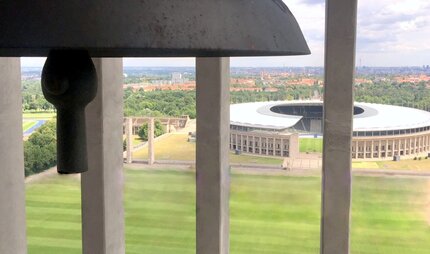
Looking out on the Olympiastadion and Grunewald
Geschichtsort (Historical Site) Olympiagelände
Cast your eyes across the forests and lakes. The bell tower at the Olympiastadion offers a magnificent panorama. Find out more about the
Show details
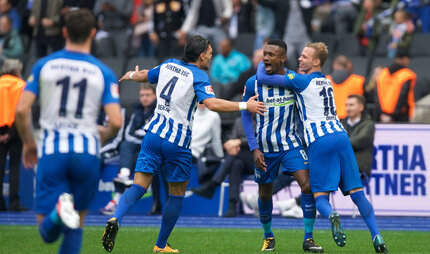
From the “Plumpe” into the Olympic Stadium
Founded in 1892, the club's history has been like a rollercoaster ride ever since. With numerous promotions and relegations, the club has
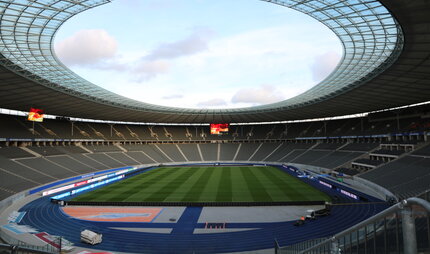
Impressive guided tour & fascinating stadium feeling
Guided Tour: Highlight Tour at Olympic Stadium Berlin
from € 11.00
Tickets & dates
Olympiastadion Berlin

Top ways to experience Olympiastadion Berlin and nearby attractions

Most Recent: Reviews ordered by most recent publish date in descending order.
Detailed Reviews: Reviews ordered by recency and descriptiveness of user-identified themes such as waiting time, length of visit, general tips, and location information.

Also popular with travellers

OLYMPIASTADION BERLIN: All You Need to Know BEFORE You Go (with Photos)
- City Sightseeing Berlin Hop-On Hop-Off Bus (From £21.78)
- Private Day Tour of Wannsee and Potsdam from Berlin (From £348.61)
- 5hours: Guide, Chauffeur & Photographer in Berlin private Tour (From £514.20)
- Berlin Private Full-Day Tour by Car (From £566.49)
- Football Tour EURO 2024 (From £21.78)
- (0.91 mi) Hotel Rotdorn
- (0.49 mi) Westlife Apart Hotel Berlin
- (1.73 mi) Hotel Brandies
- (2.92 mi) Hotel Louisa's Place
- (4.19 mi) Mittendrin - Boutique Hotel Berlin
- (0.19 mi) Olympia Eck
- (0.22 mi) Stadionterrassen
- (0.29 mi) Preussisches Landwirtshaus
- (2.26 mi) Restaurant Buschbeck's
- (2.63 mi) Focaccino
- (0.12 mi) Sommerbad Olympiastadion
- (0.25 mi) Museum West Alliierte in Berlin e.V
- (0.29 mi) Waldfriedhof Heerstraße
- (0.34 mi) Unité d'habitation, Le Corbusier
- (0.47 mi) Berliner Waldbüehne
Free Walking Tour Berlin
When: Every day 10am & 12pm every day Where: The meeting point is in front of the ehemaliges Kaiserliches Postfuhramt Berlin, Oranienburger Straße, 10117 Berlin, Germany, next to the entrance. Price: Free
The Architectural Marvel: Berlin’s Olympic Stadium
by Original Berlin Tours | Mar 7, 2024 | Original Berlin
Introduction
Welcome to a journey back in time, where we explore the incredible Olympic Stadium in Berlin, Germany. This architectural masterpiece has witnessed some of the greatest sporting moments in history. Built for the 1936 Summer Olympics, it stands as a testament to both German engineering prowess and the enduring spirit of sportsmanship.
A Brief History
The Olympic Stadium in Berlin was designed by German architect Werner March. Its construction began in 1934, under the orders of Adolf Hitler, who sought to use the Olympics as a showcase for Nazi Germany’s power and ideals. The stadium was envisioned to be a symbol of architectural prowess and strength, a reflection of Nazi ideology.
Despite its controversial origins, the Olympic Stadium has since evolved into a cherished landmark and an iconic sporting venue. Its history is a testament to the transformative power of sports, as it has hosted numerous memorable events over the years.
Architectural Features
1. the central axis.
The Olympic Stadium is known for its impressive central axis, which consists of several key elements. At one end of the axis is the Marathon Gate, through which athletes entered the stadium. The axis is further accentuated by the stone eagle, which overlooks the entire arena from the Maifeld field.
The symmetrical layout of the stadium emphasizes this central axis, leading the eye towards the monumental Bell Tower, a 77-meter tall structure boasting stunning views of Berlin. The tower holds six Olympic bells, which were originally intended to ring in harmony with each other.
2. The Olympic Bell
The Olympic Bell is a remarkable piece of engineering and artistry. Weighing a staggering 10 tons, it is adorned with Olympic rings and features intricate carvings depicting sporting scenes. The bell was rung to herald the beginning and ending of each Olympic event during the historic games in 1936.
3. The Stadium Bowl
The stadium bowl, with its distinctive horseshoe shape, offers spectators unobstructed views of the field. The seating capacity at the time of construction was a record-breaking 100,000, with an additional 20,000 standing places. Such capacity showcased the grandeur of Nazi ambitions and set new standards for stadiums worldwide.
Sporting Events and Legacy
Since its completion, the Olympic Stadium has hosted a wide array of sporting events. From the FIFA World Cup to major athletics competitions, it continues to be a dynamic venue that hosts both national and international events. Notably, it was home to Hertha BSC, Berlin’s prestigious football club, until 1963 when they moved to the Olympiastadion Berlin.
The stadium also holds a special place in the hearts of music lovers. Many legendary artists, including The Rolling Stones, U2, and Michael Jackson, have performed at the Olympic Stadium, taking advantage of its unique acoustics and vast capacity.
However, the true legacy of the Olympic Stadium lies in its ability to transcend its dark past and become a symbol of unity and peace. The restoration efforts after World War II involved removing the overt Nazi symbolism, transforming the stadium into a space that represents the values of inclusivity and fair competition.
Visiting the Olympic Stadium
If you find yourself in Berlin, a visit to the Olympic Stadium is a must-do. You can take a guided tour to explore the historic site and learn about its fascinating history. Ascend the Bell Tower for panoramic views of the city skyline, or simply stroll around the grounds to appreciate the grandeur of the stadium’s architecture.
Additionally, the stadium hosts an interactive Olympic and Sports Museum, where you can delve deeper into the history of the Olympic Games and the stadium itself. The museum provides an immersive experience, allowing visitors to relive iconic sporting moments through multimedia exhibits.
Plan Your Visit
Here are a few key details to help you plan your visit to the Olympic Stadium:
– Location: Olympischer Platz 3, 14053 Berlin, Germany
– Opening Hours: The stadium and museum are open daily, with varying hours. It’s recommended to check the official website for the most up-to-date information.
– Guided Tours: The stadium offers guided tours for individuals and groups, providing in-depth insights into its history and architectural significance.
– Accessibility: The stadium is wheelchair-accessible, ensuring that everyone can enjoy this remarkable attraction.
In Conclusion
The Olympic Stadium in Berlin, Germany, stands as a testament to human achievement, both in sports and architecture. Despite a complex history, it has transformed into a symbol of inclusivity and unity. Whether you are a sports enthusiast, a history buff, or an architecture lover, a visit to this iconic stadium is an unforgettable experience that immerses you in the spirit of the Olympics and leaves you in awe of human ambition.
Table of Contents
Thank you for reading. If you're inspired by the stories of Berlin and want to delve deeper, why not join us on our Free Berlin Walking Tour ? It's a wonderful way to immerse yourself in the city's rich history and vibrant culture. We look forward to welcoming you soon.
WHAT TO EXPECT
- 3.5 hours walking tour
- Berlin’s major highlights
- Brandenburg Gate
- Reichstag and Berlin Wall
- Historical sites


Check out our other cities
Berlin tours.
- Original Berlin Tours
- Berlin Pub Crawl
- Pub Crawl Berlin
- Free Berlin Tours
- More Berlin Tours
- Cold War Tour Berlin
- World War Tour Berlin
- Sachsenhausen Tour
Barcelona Tours
- Free Barcelona Tours
- Barcelona Pub Crawl
- Pub Crawl Barcelona
Budapest Tours
- Free Budapest Tours
- Budapest Bar Crawl
- Pub Crawl Budapest
Madrid Tours
- Madrid Pub Crawl
- Pub Crawl Madrid
- Nice Pub Crawl
- Nice Bar Crawl
- Pub Crawl Nice
Amsterdam Tours
- Amsterdam Pub Crawl
- Bar Crawl Amsterdam
Paris Tours
- Pub Crawl Paris
Dublin Tours
- Pub Crawl Dublin
Warsaw Tours
- Pub Crawl Warsaw
Stockholm Tours
- Pub Crawl Stockholm
Other Links
- Original Pub Crawls
- Be Original Tours
- Original Free Tours
- E-Ticket Trail

FEATURED EXPERIENCE NO. 18
Step inside the olympic stadium, site of the 1936 'nazi olympics'.
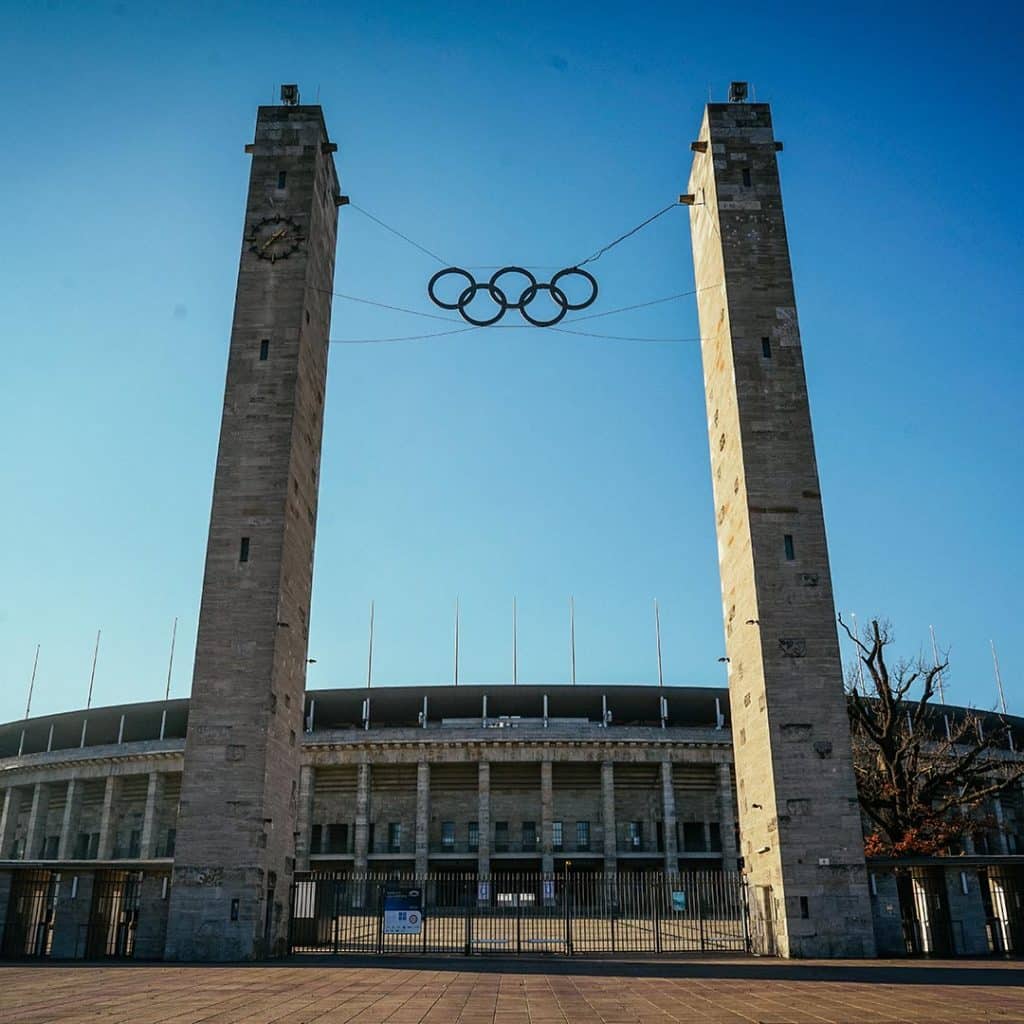
Did you know...
The 1936 Nazi Olympics was the first 100% televised Olympic Games?
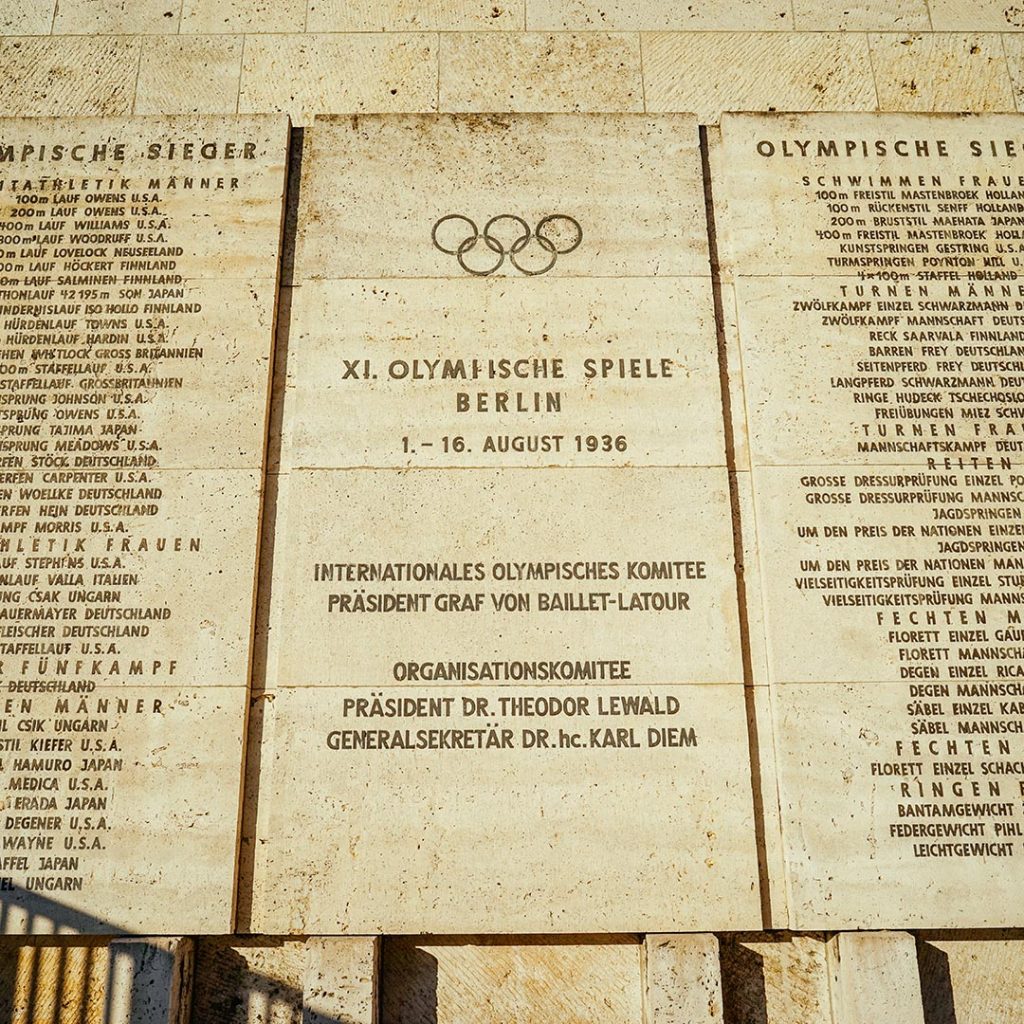
The Olympic Stadium
- Olympischer Platz 3, 14053 Berlin
- S-bahn Olympiastadion
Some useful links related to the Brandenburg Gate:
FEATURED EXPERIENCES

Walk Through The Brandenburg Gate

Explore The State Musems On Museum Island

Visit The Berlin TV Tower – The Fernsehturm
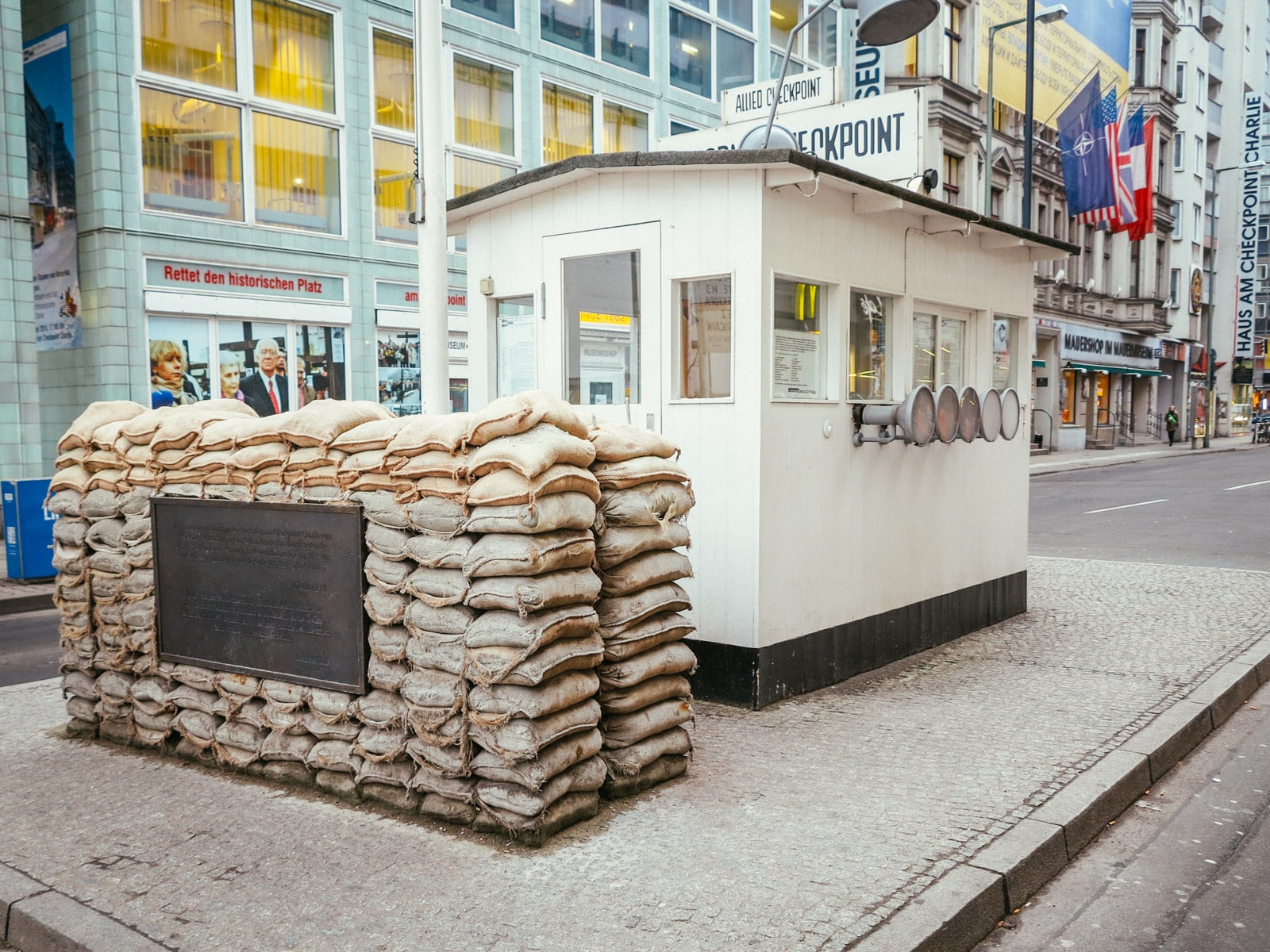
Cross The Cold War Border At Checkpoint Charlie
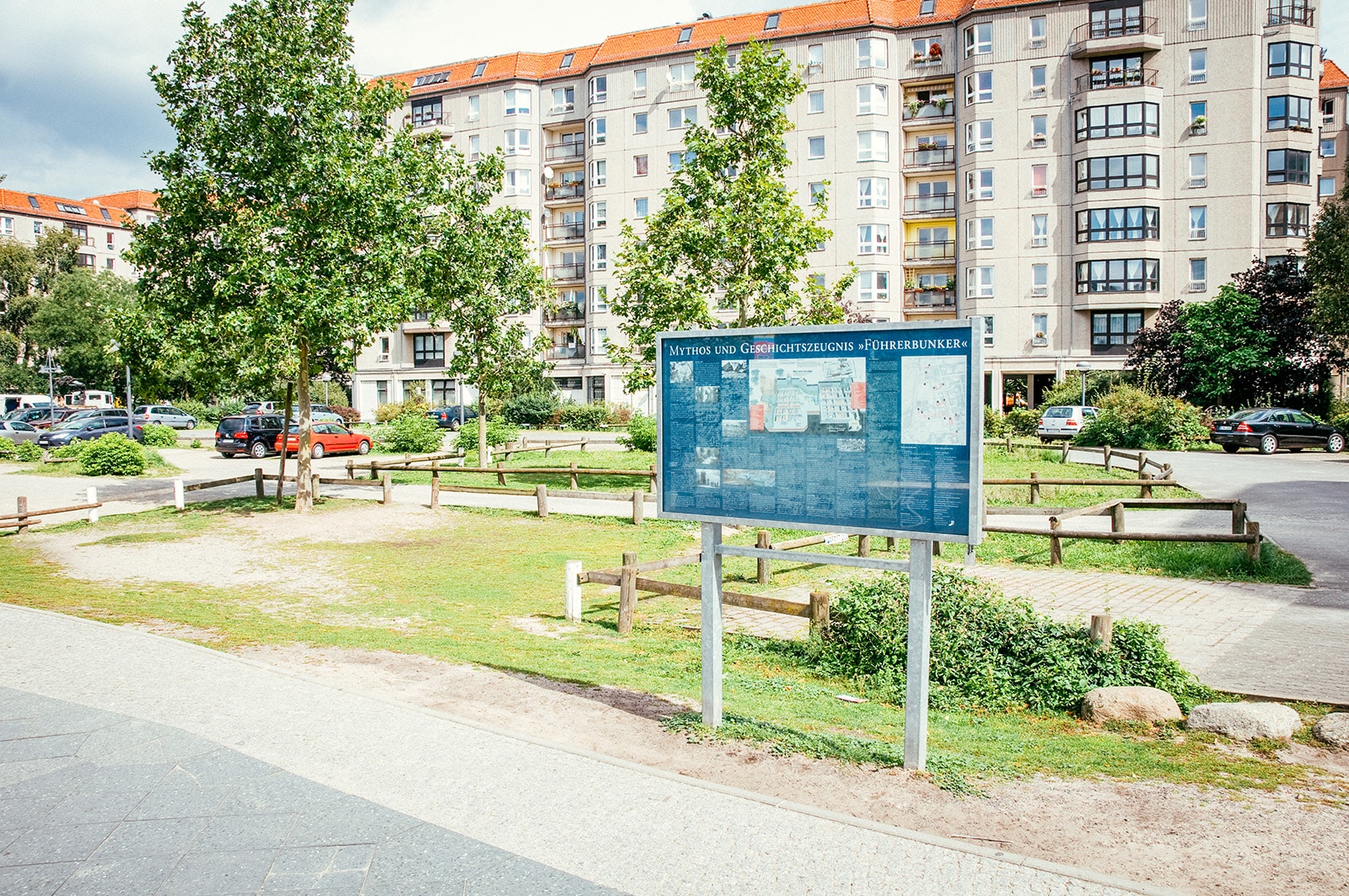
Visit The Site Of Adolf Hitler’s Führerbunker
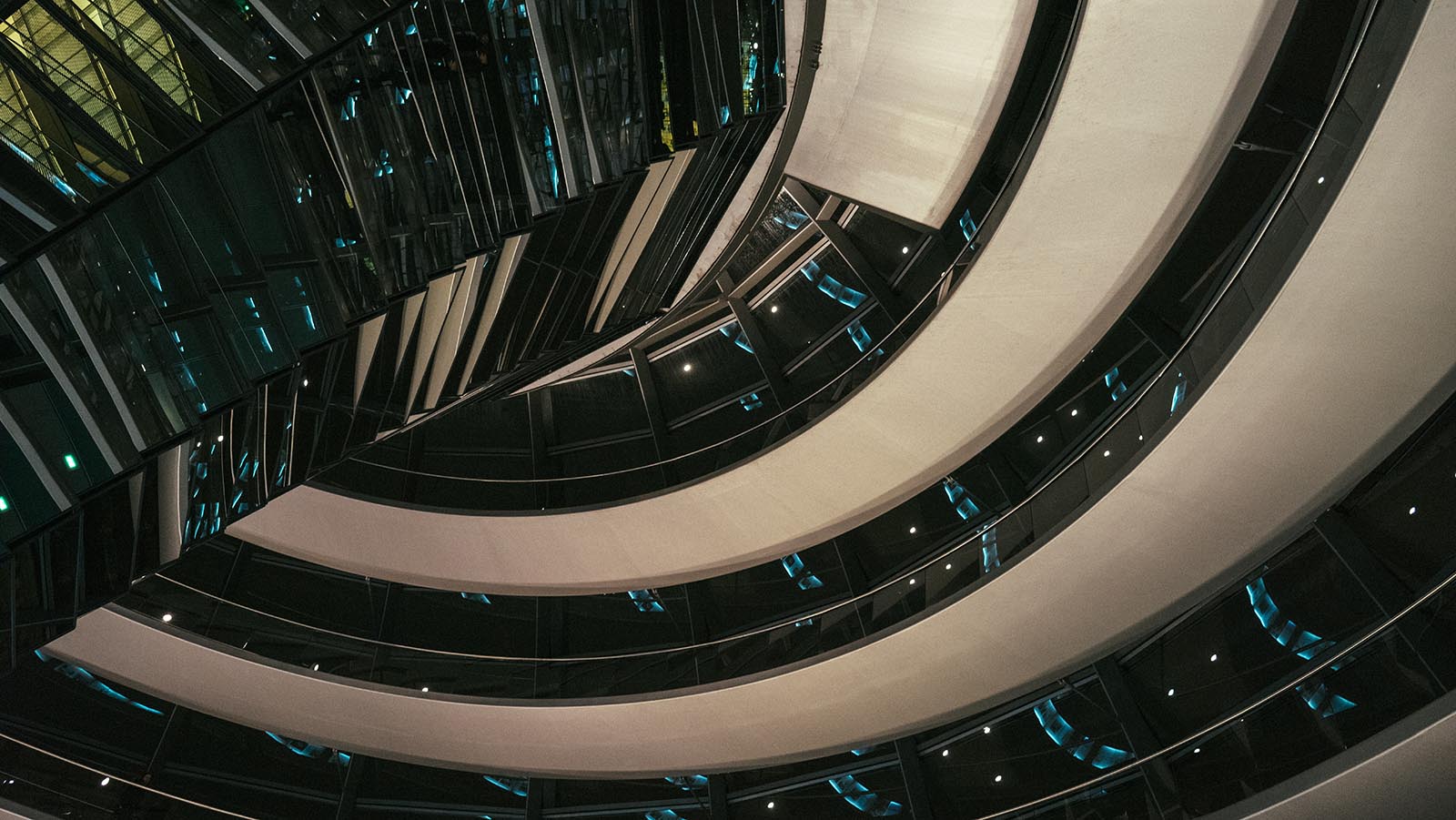
Visit The Reichstag Cupola At Night

Explore The Forum Fridericianum
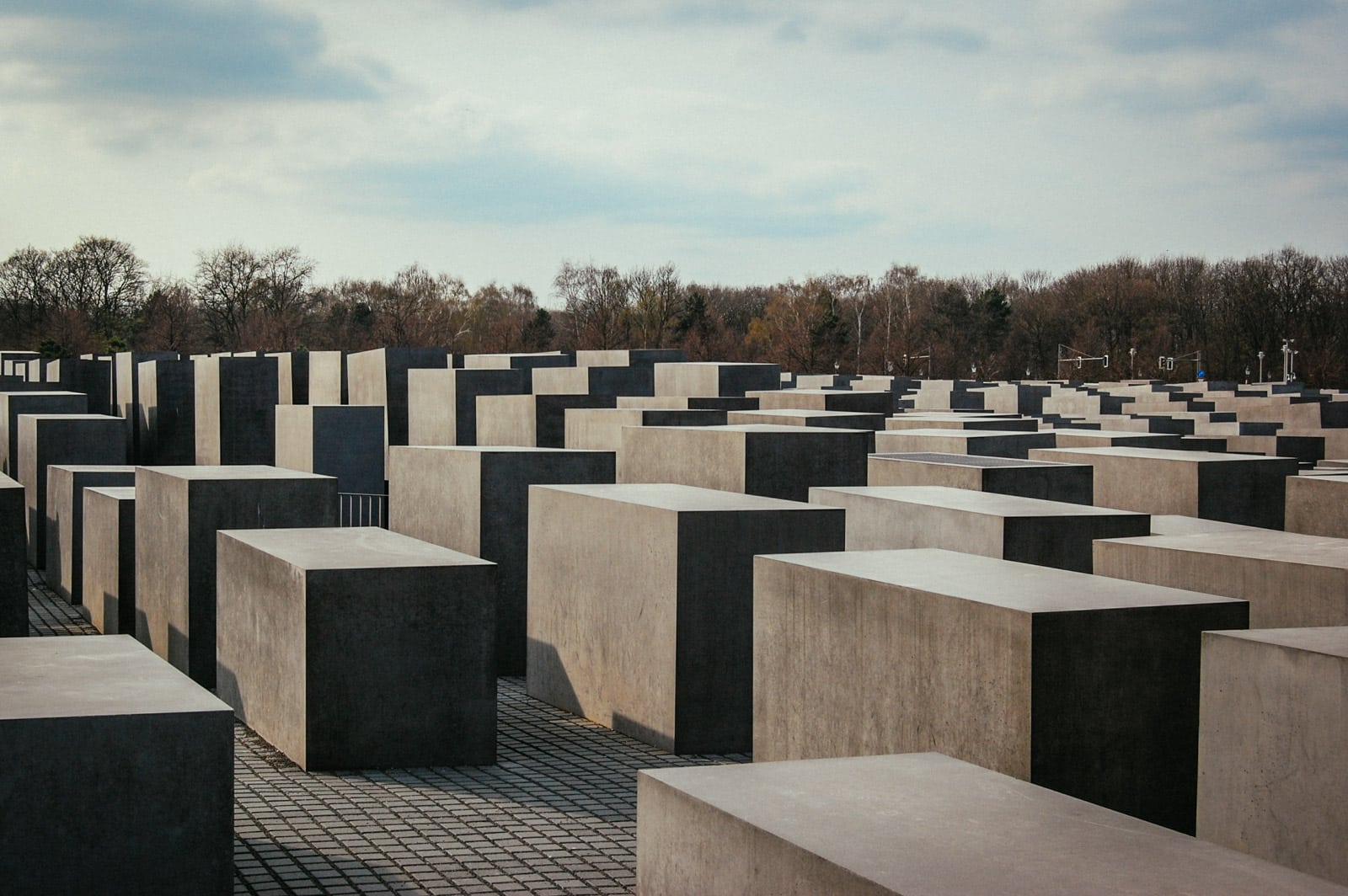
Journey Into The Memorial To The Murdered Jews Of Europe

Step Inside The Neue Wache
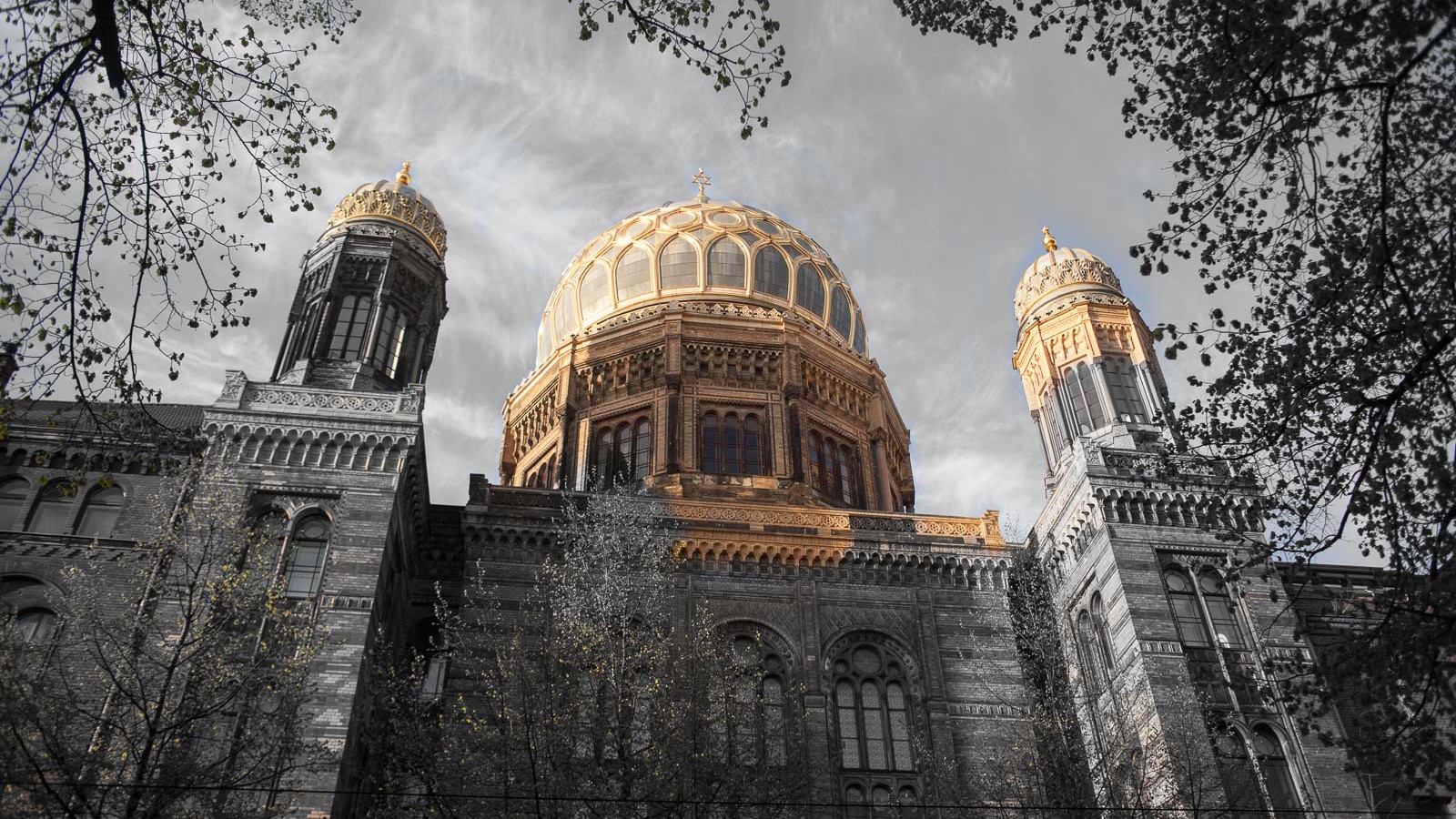
Explore The Former Jewish Quarter – Spandauer Vorstadt

Visit The Remains Of The Berlin Wall
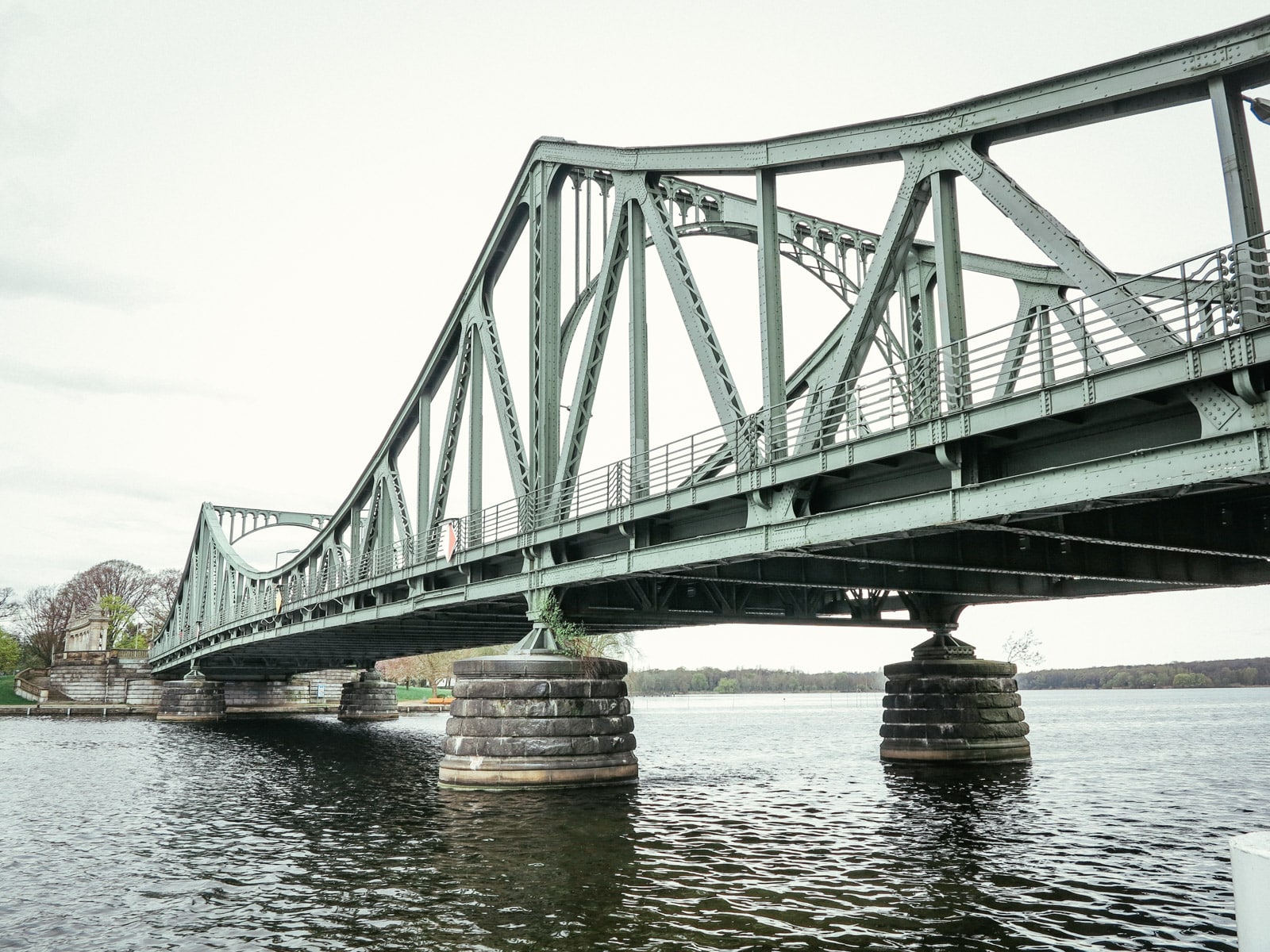
Walk Across The Bridge Of Spies

Explore The Topography Of Terror
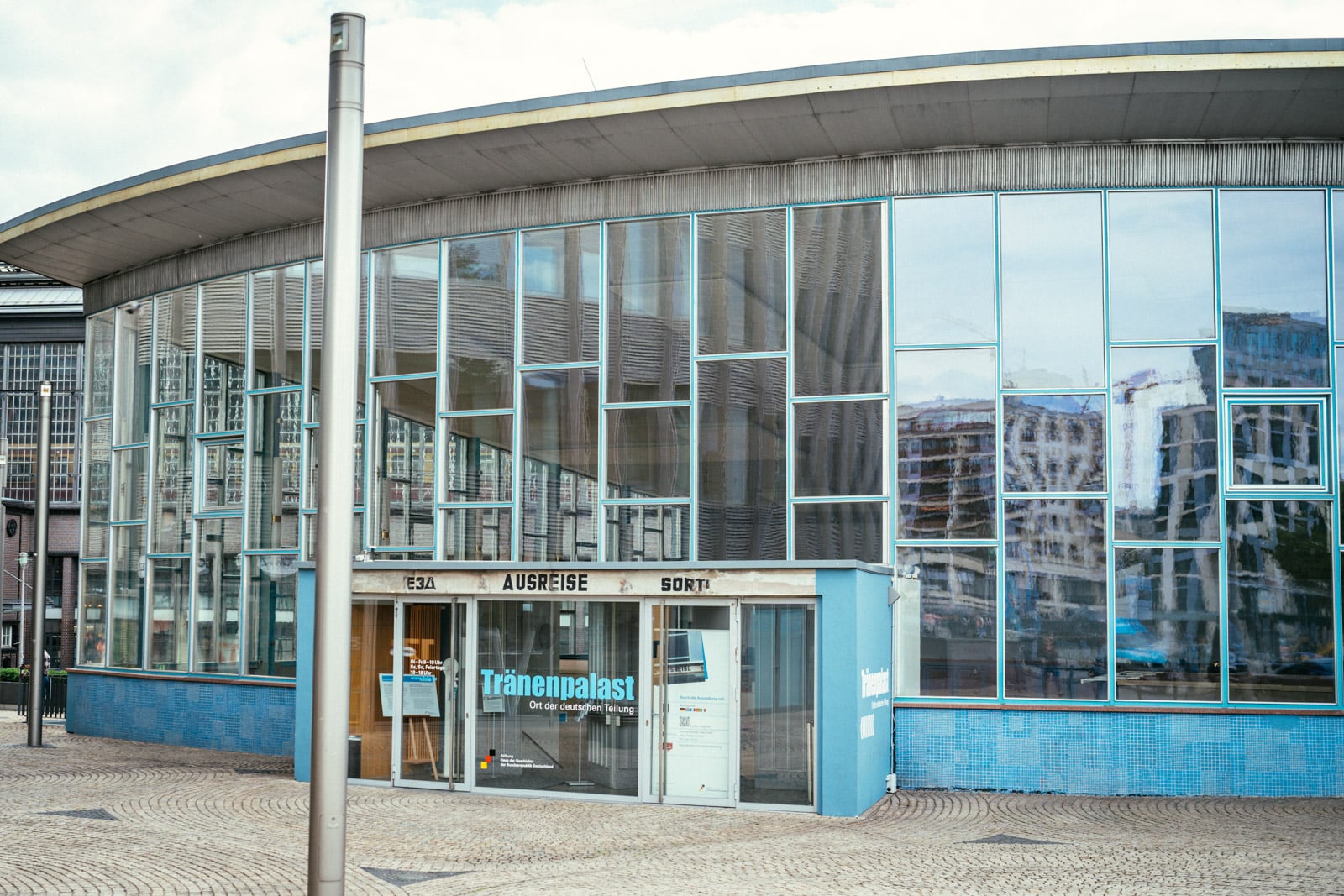
Enter The Palace Of Tears – The Tränenpalast
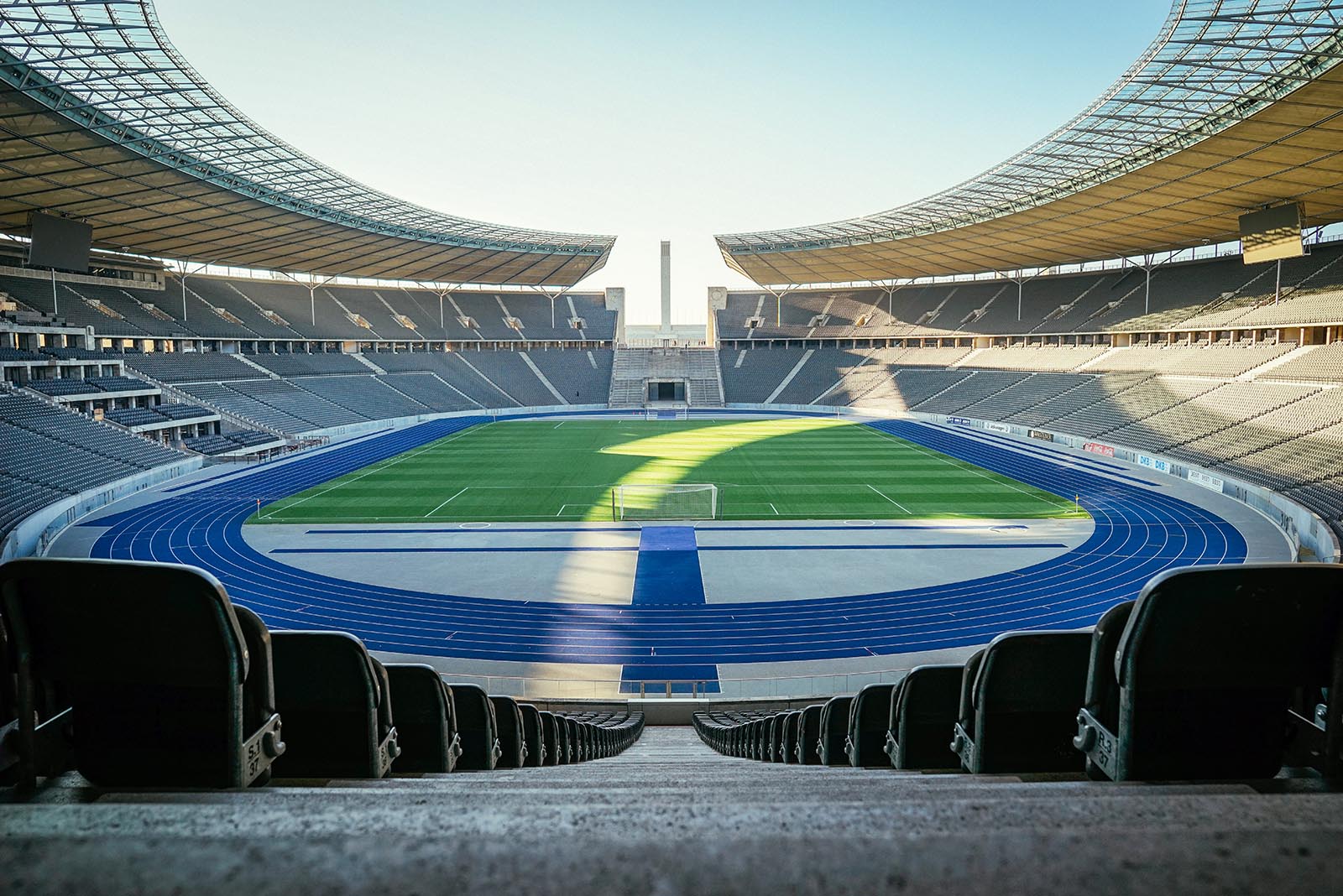
Step Inside The Berlin Olympic Stadium

Explore Erich Mielke’s Office At The Stasi Museum

Walk Along Karl Marx Allee
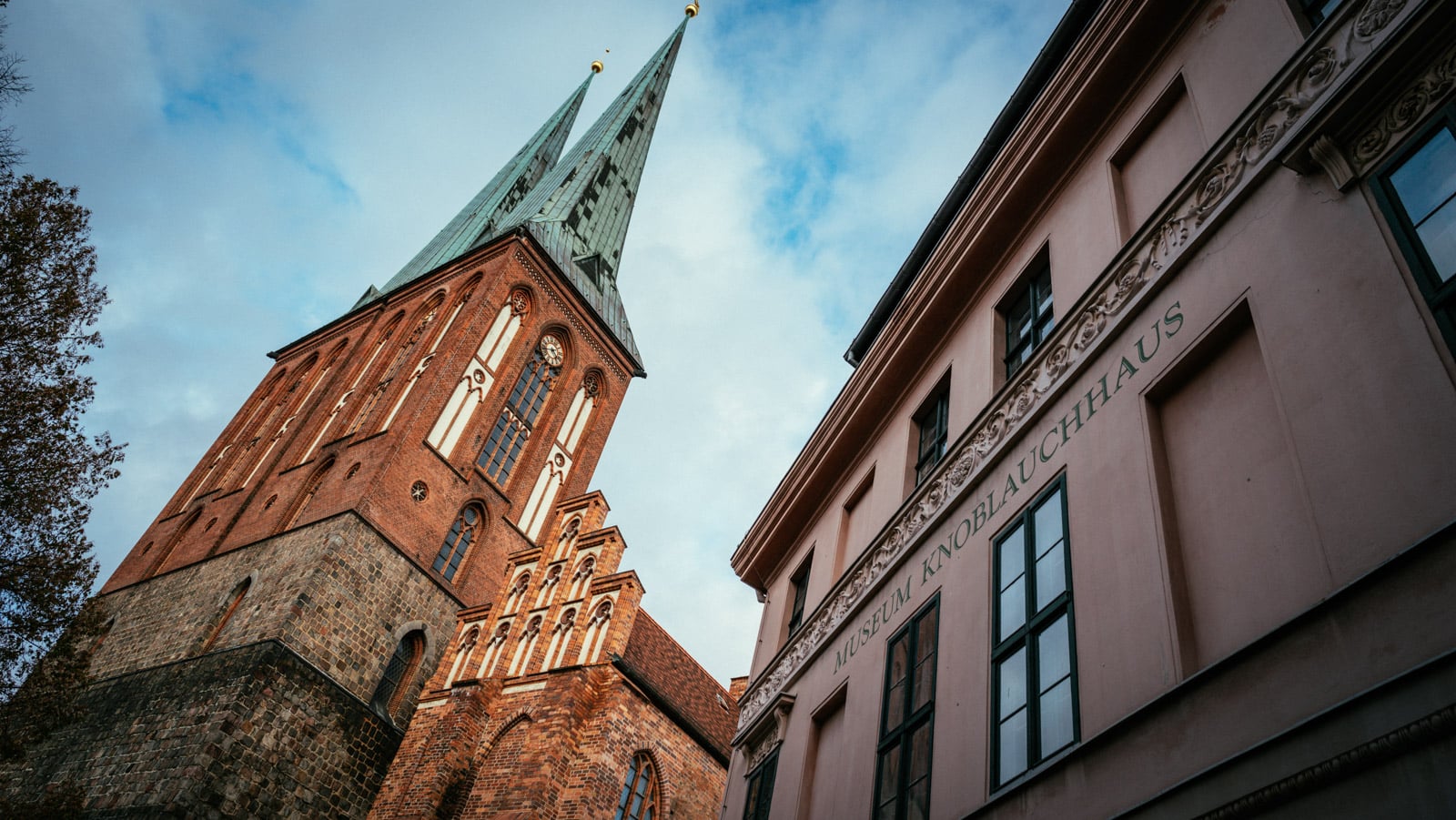
Visit The Oldest Church In Berlin – The Nikolaikirche
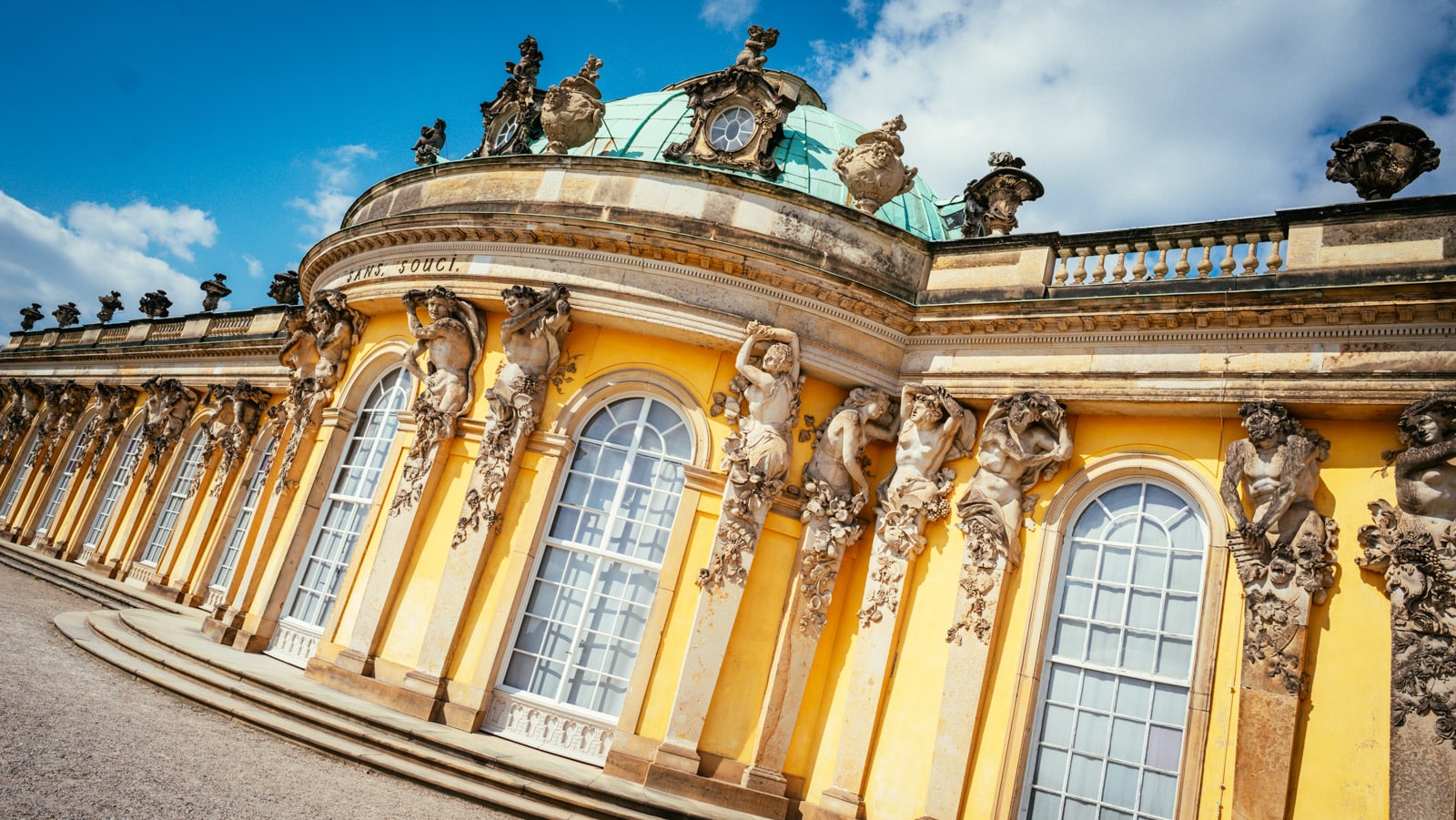
Visit The Grave Of Frederick The Great

Walk Through The Ruins Of Anhalter Bahnhof
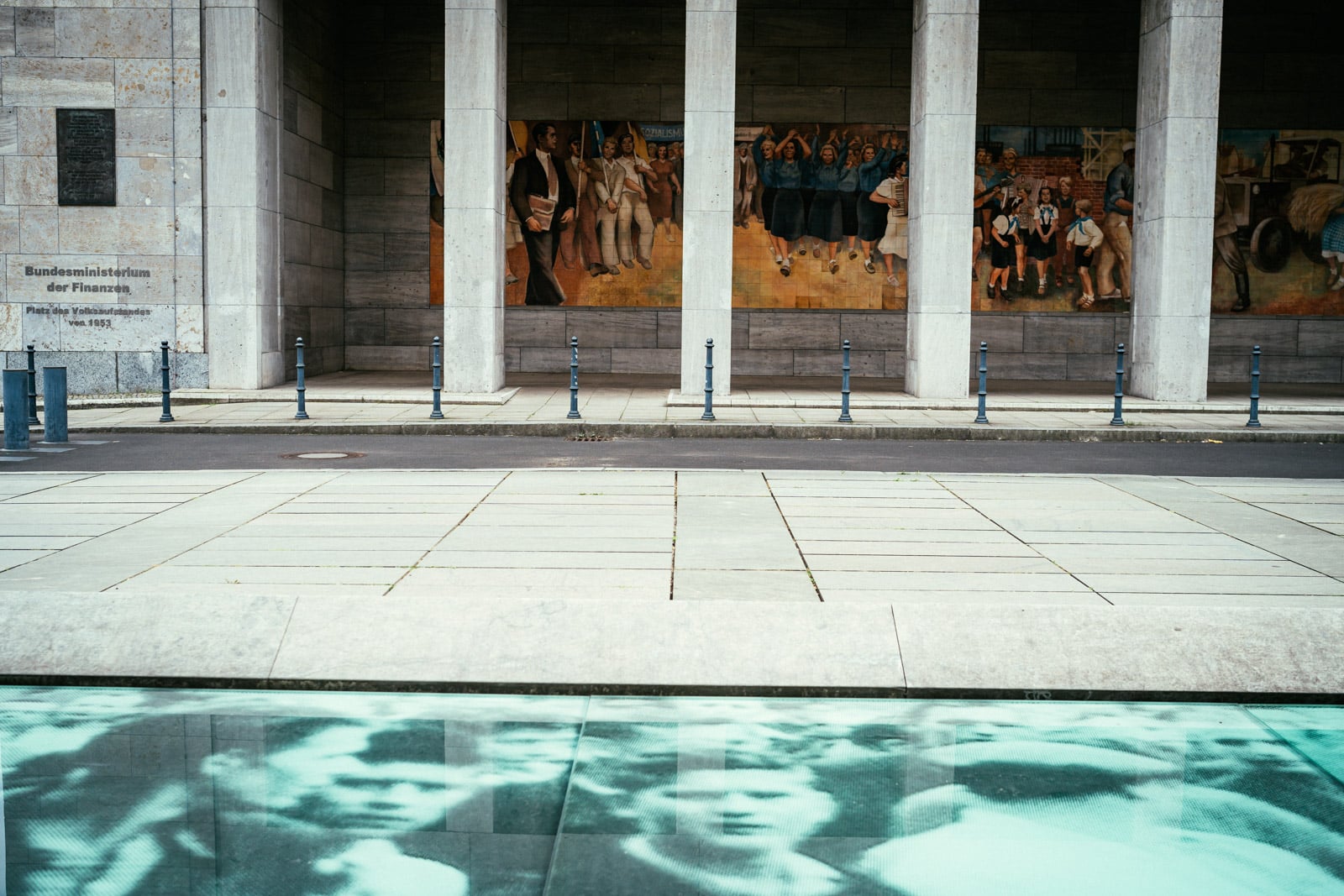
Stand On The Platz Des Volksaufstandes
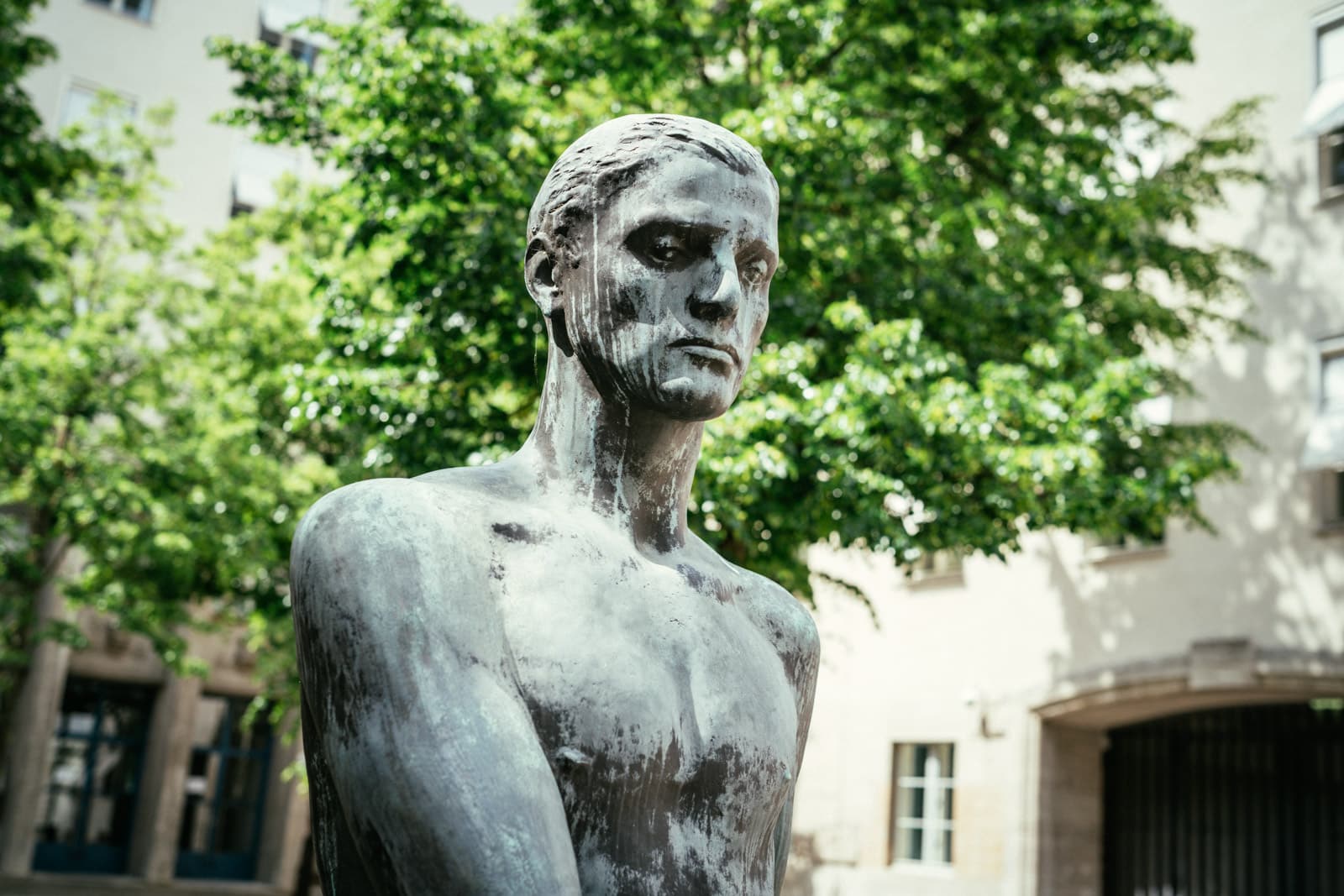
Visit The German Resistance Museum

Visit The Soviet War Memorial In The Tiergarten
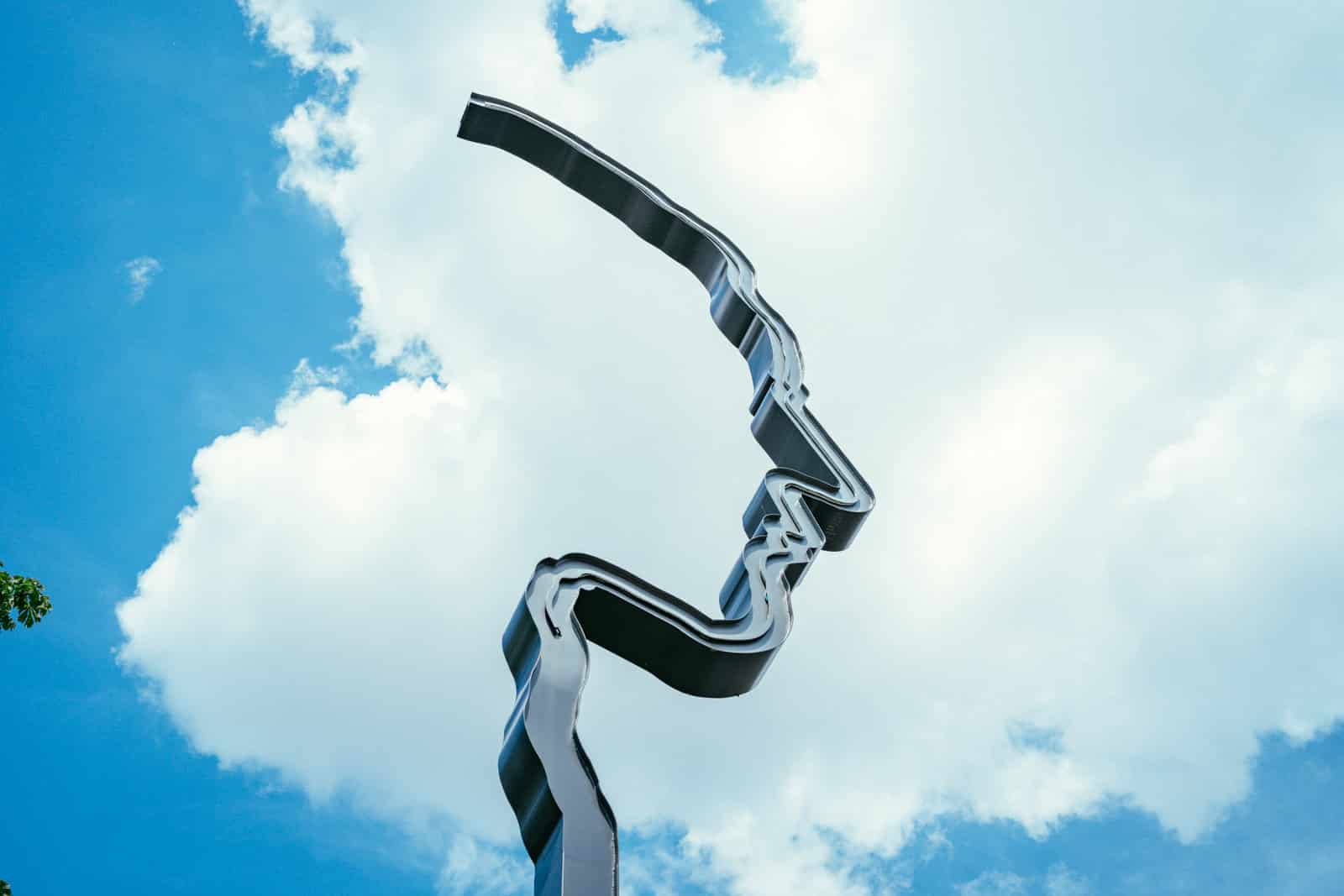
See The Georg Elser Memorial On Wilhelmstrasse
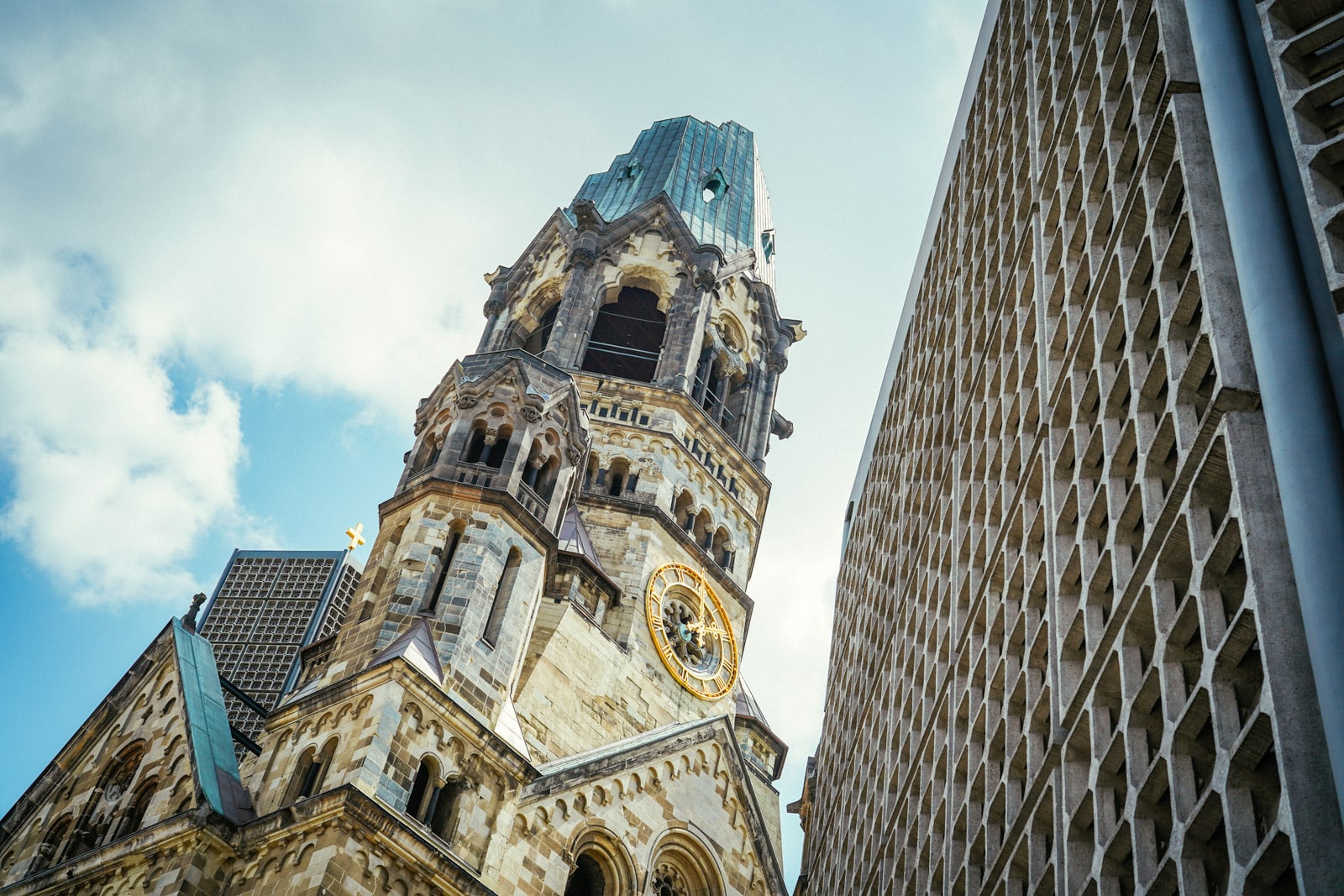
Step Inside The Kaiser Wilhelm Gedächtnis Kirche

Visit The Gleis 17 Memorial

Visit The Schloss Charlottenburg Mausoleum
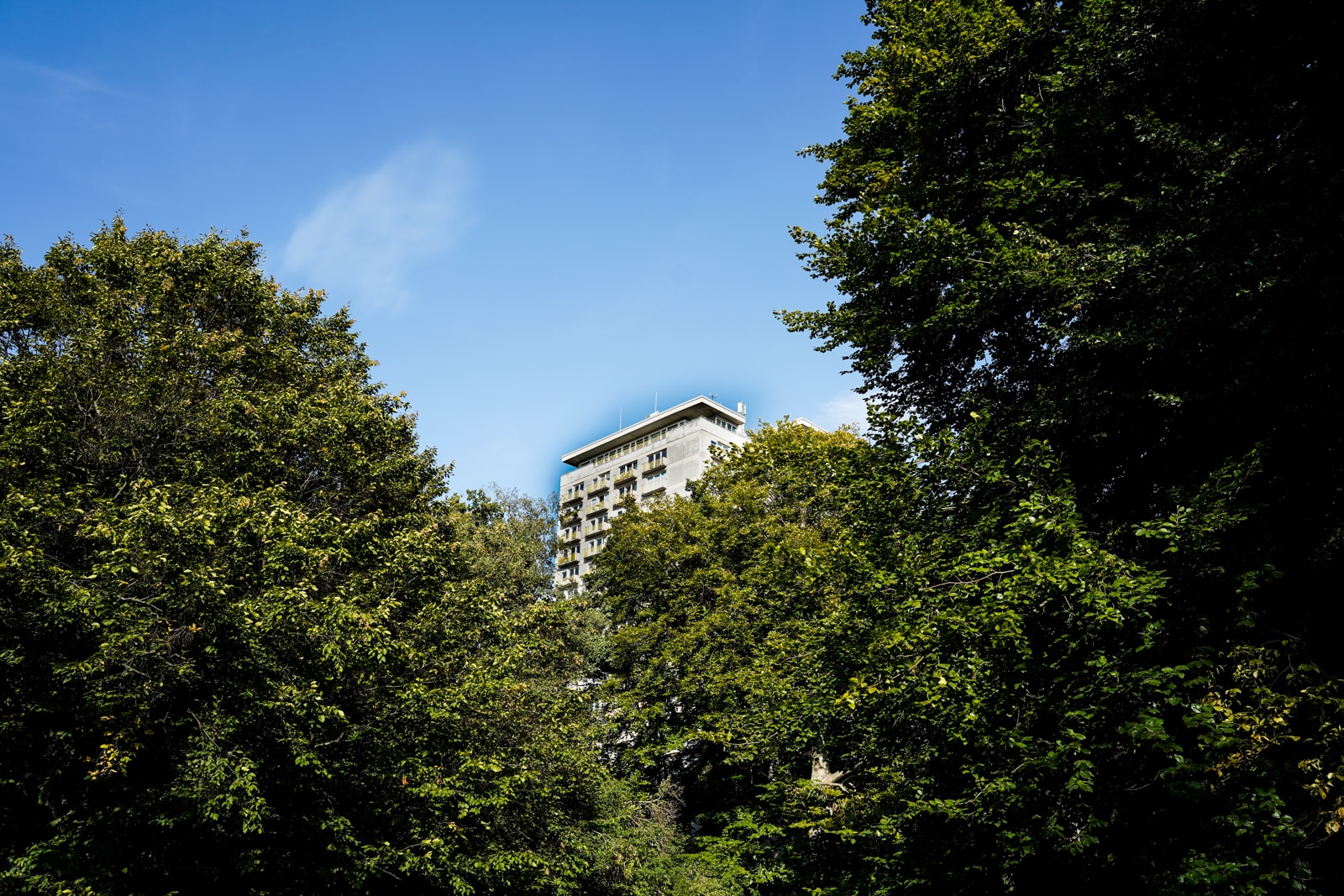
Explore The Interbau – IBA 57
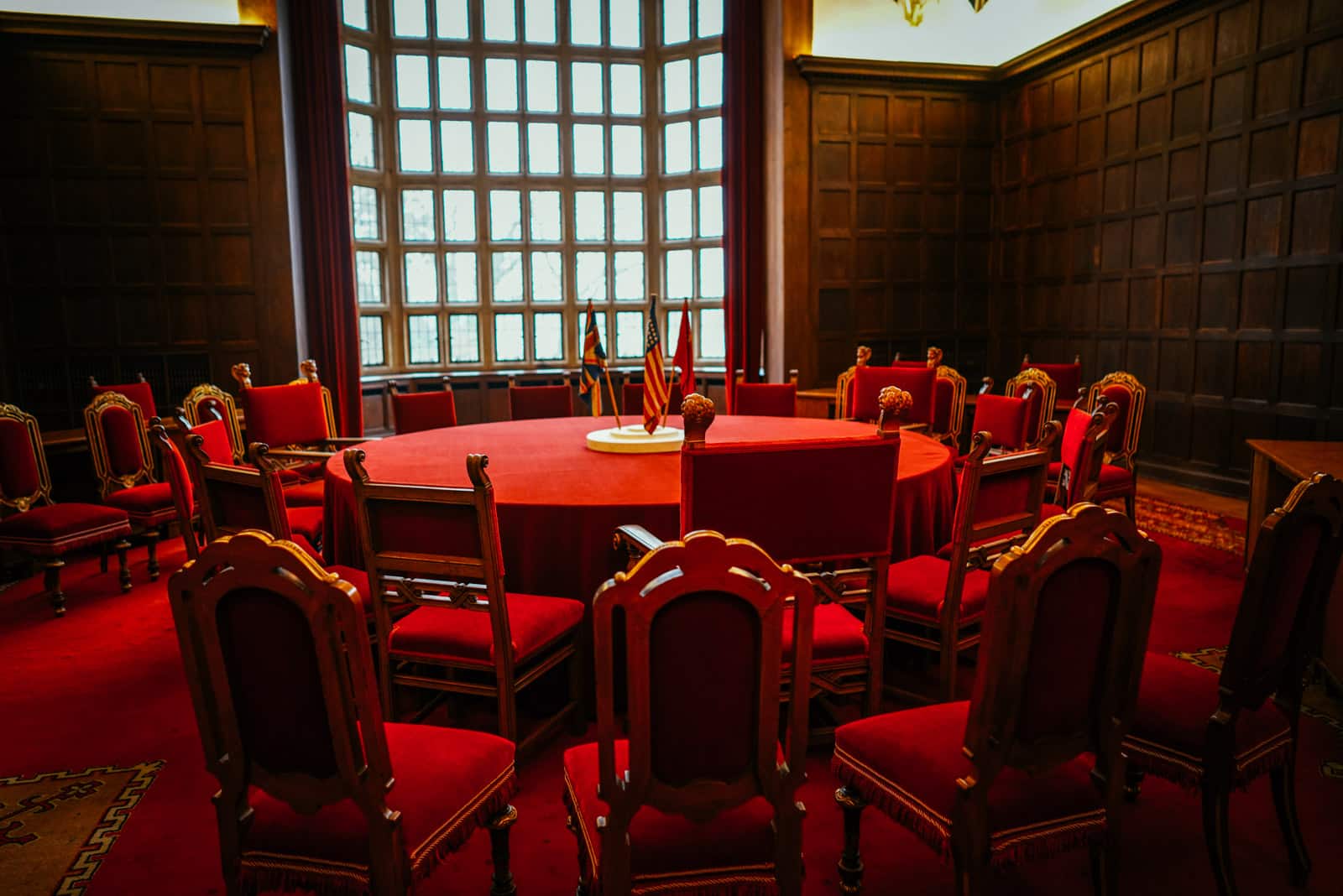
Visit Cecilienhof – Site Of The Potsdam Conference

Ride The Fastest Elevator In Europe

Visit The Soviet War Memorial In Treptower Park
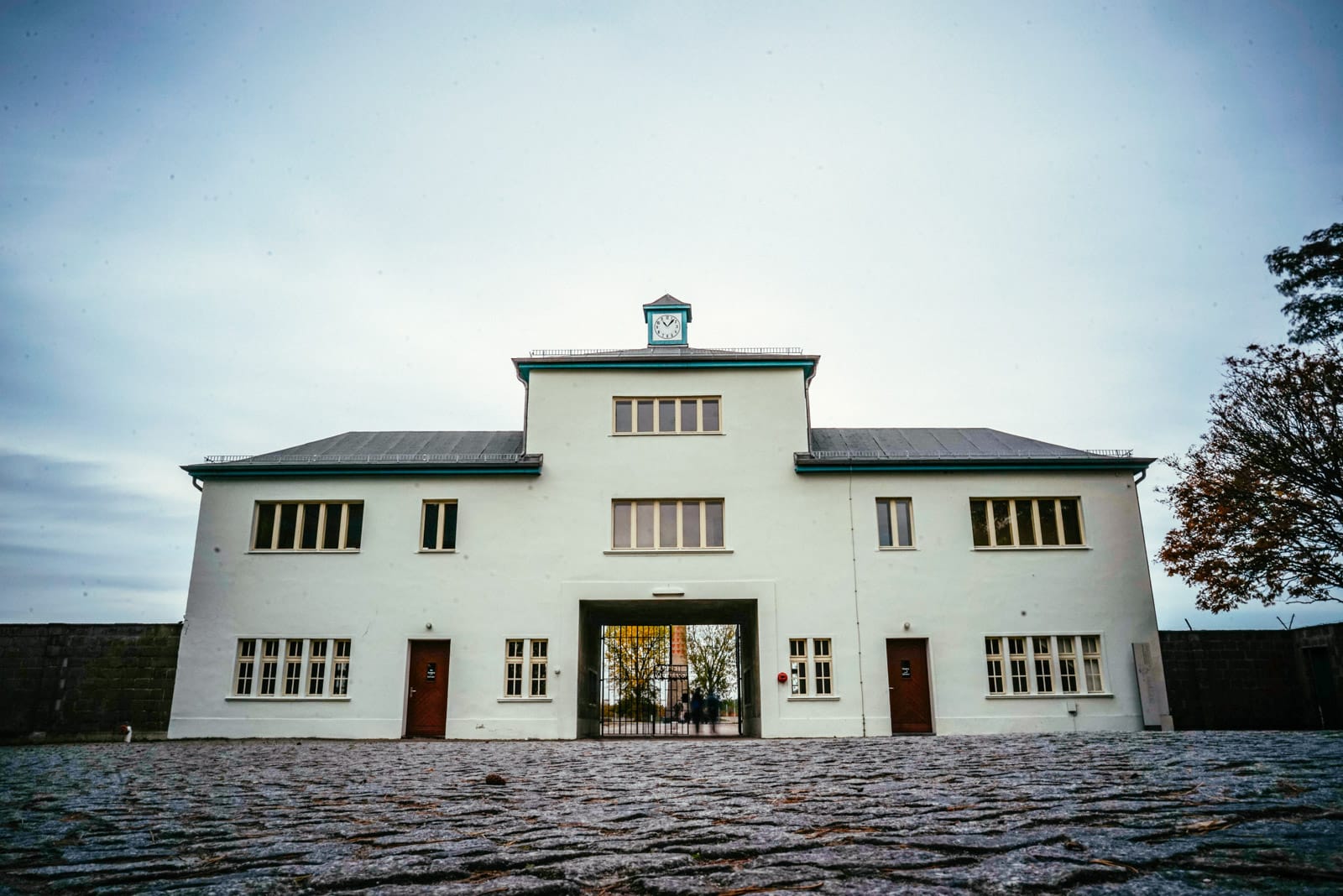
Visit The Sachsenhausen Concentration Camp Memorial

Visit The Ravensbrück Concentration Camp Memorial
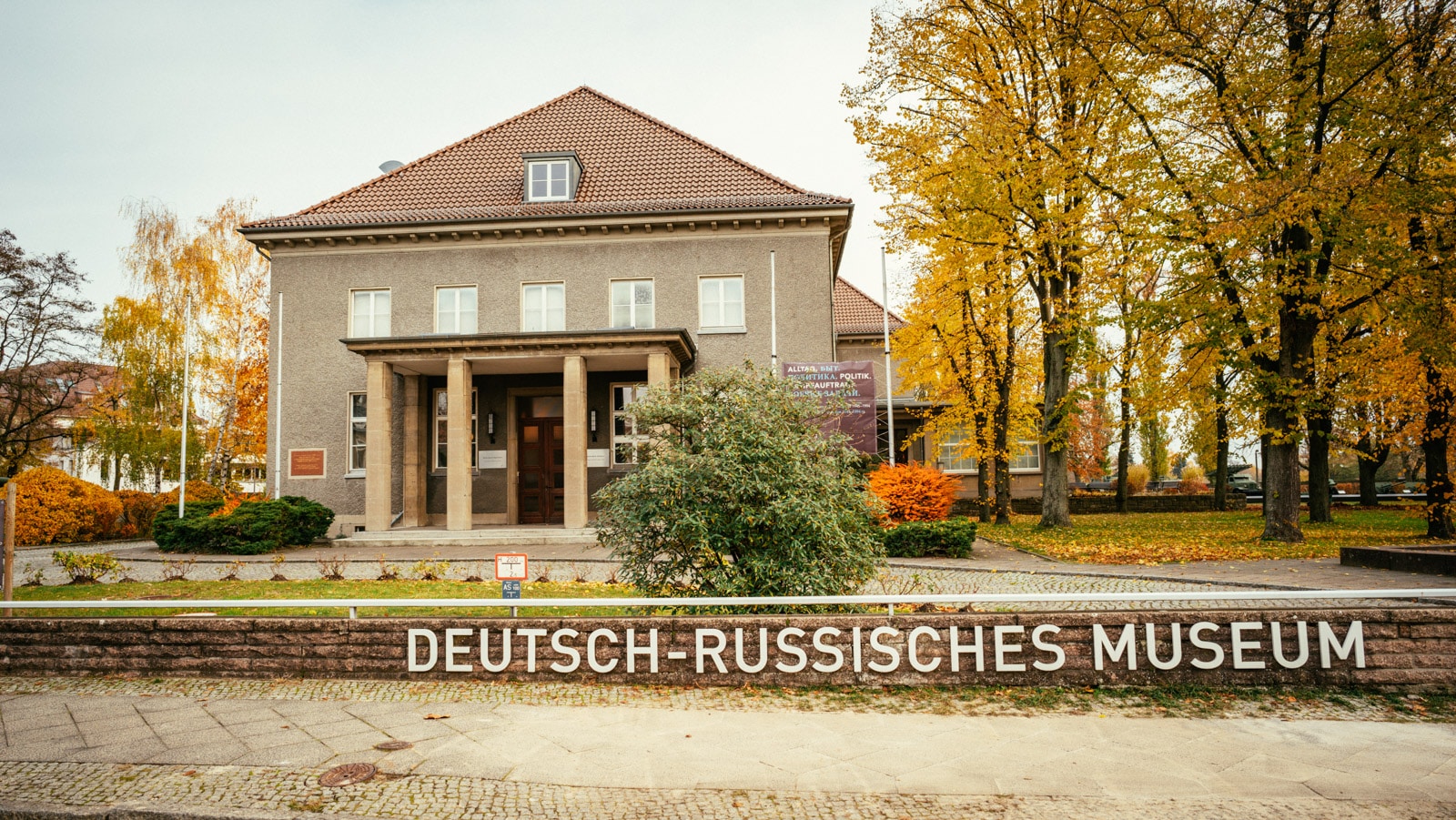
Visit Karlshorst – The Site Of The German Surrender
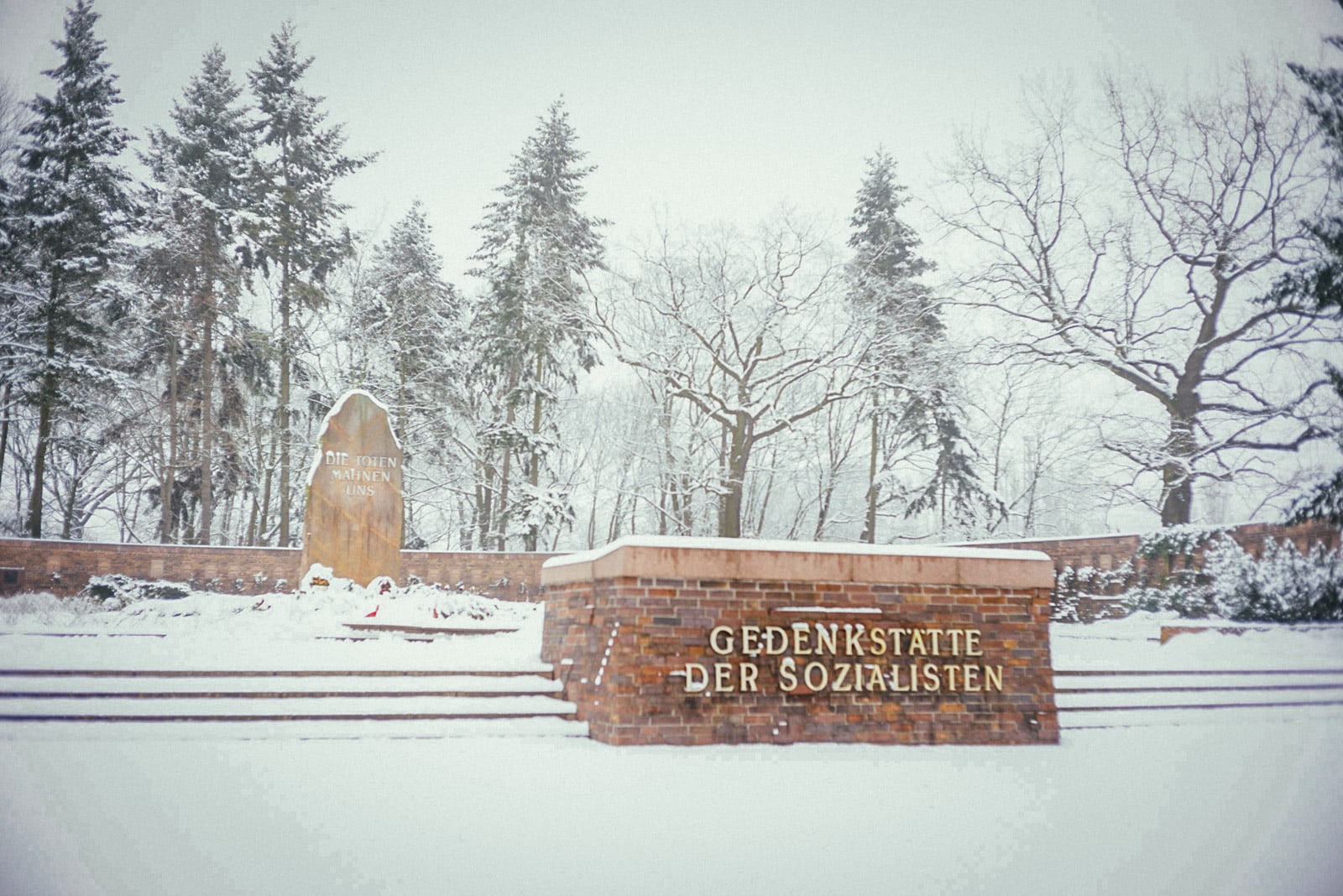
Visit The Socialists Cemetery – Zentralfriedhof Friedrichsfelde

Visit The Soviet War Memorial In Pankow

Visit the Seelow Heights Memorial
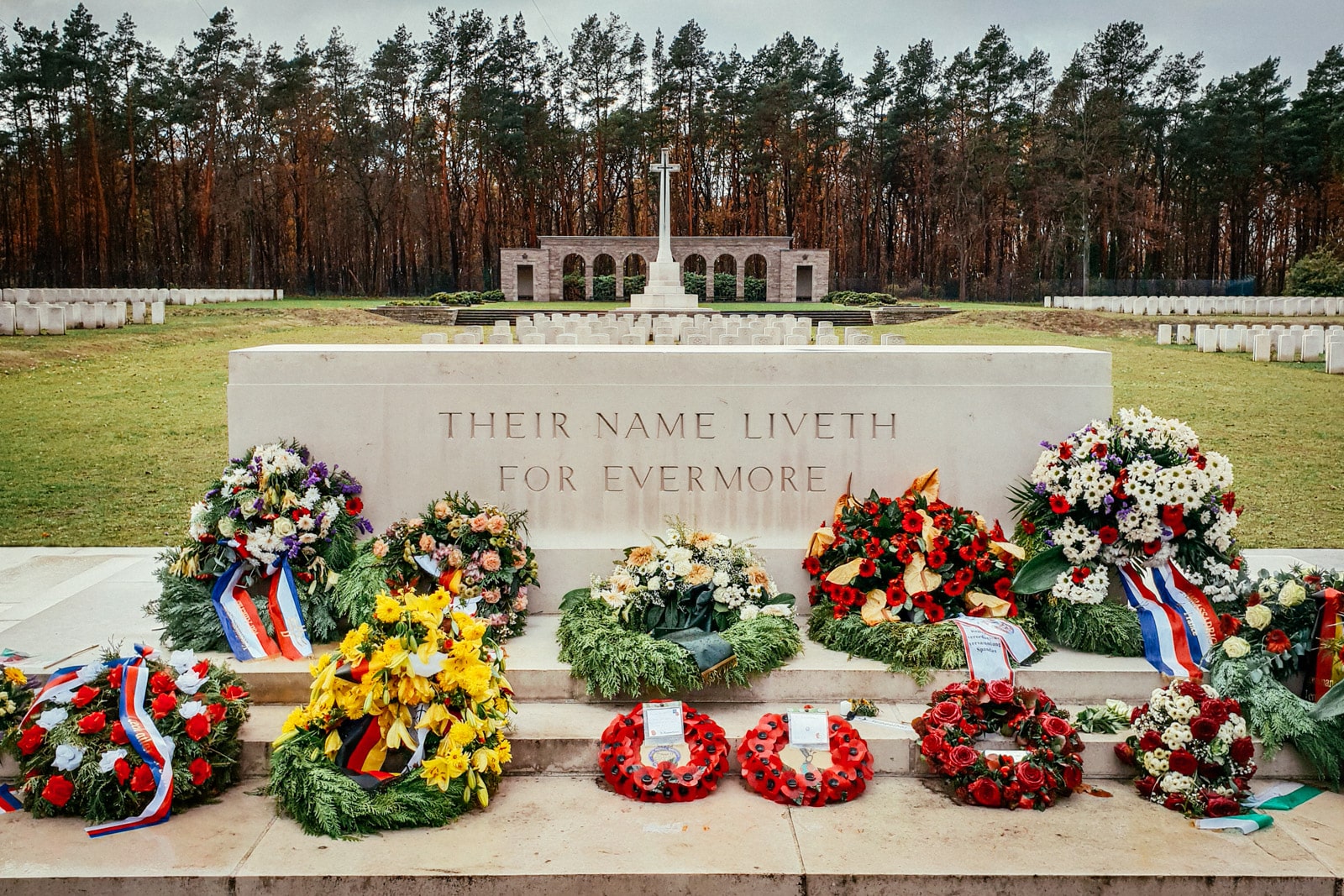
Visit The Commonwealth War Cemetery

Cross The Bösebrücke At Night
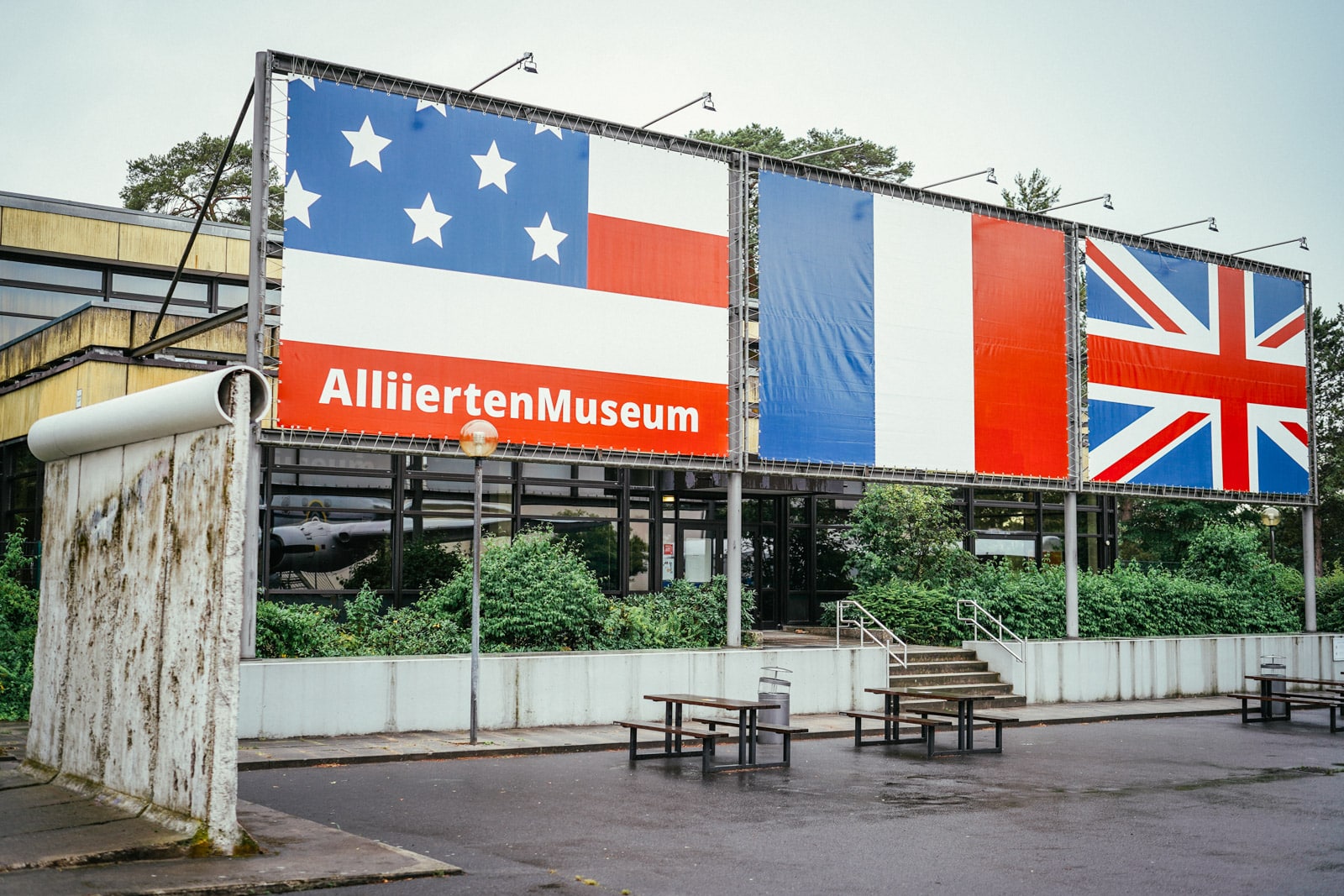
Explore The Allied Museum In Dahlem
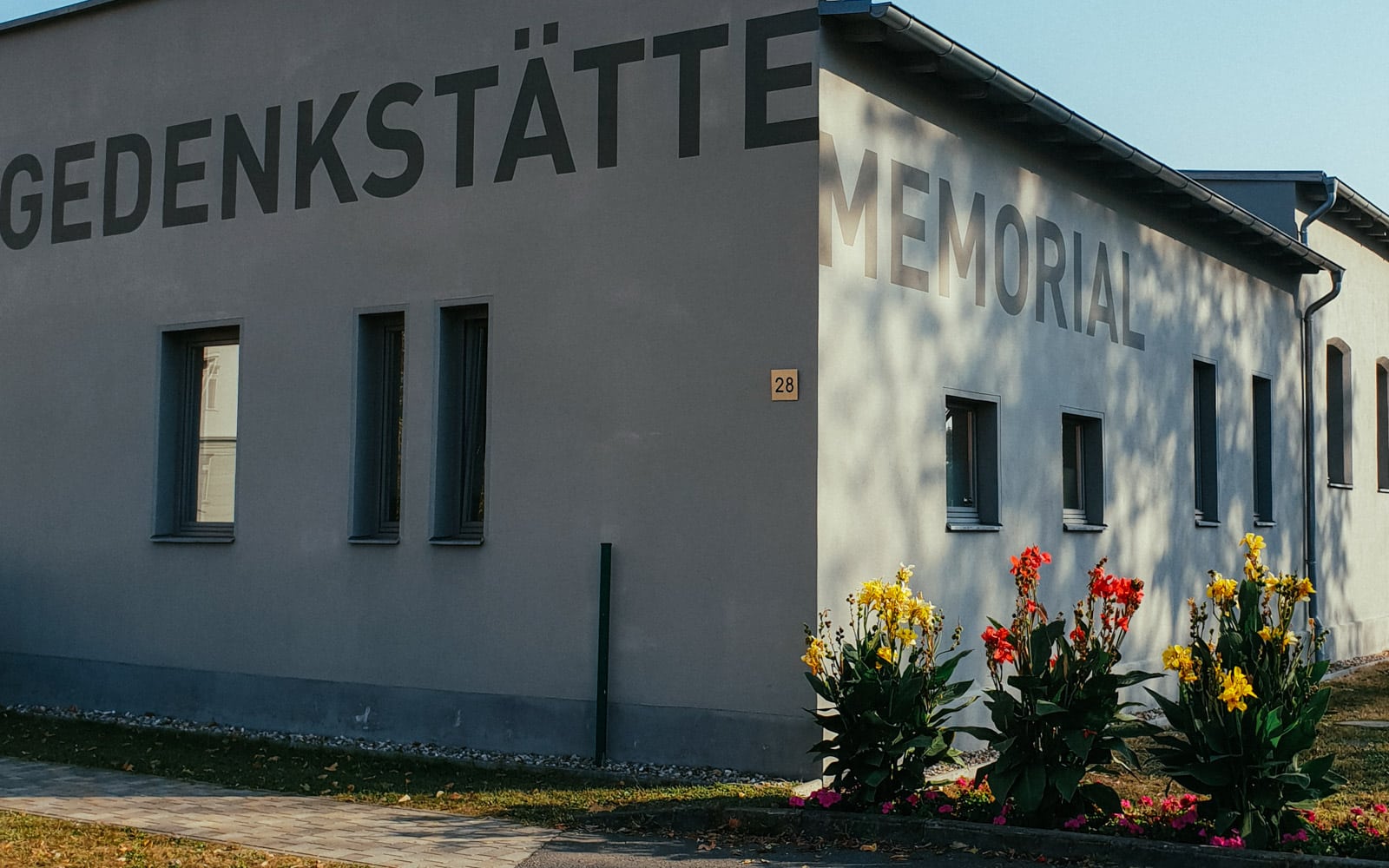
Visit The Brandenburg T4 Euthanasia Memorial
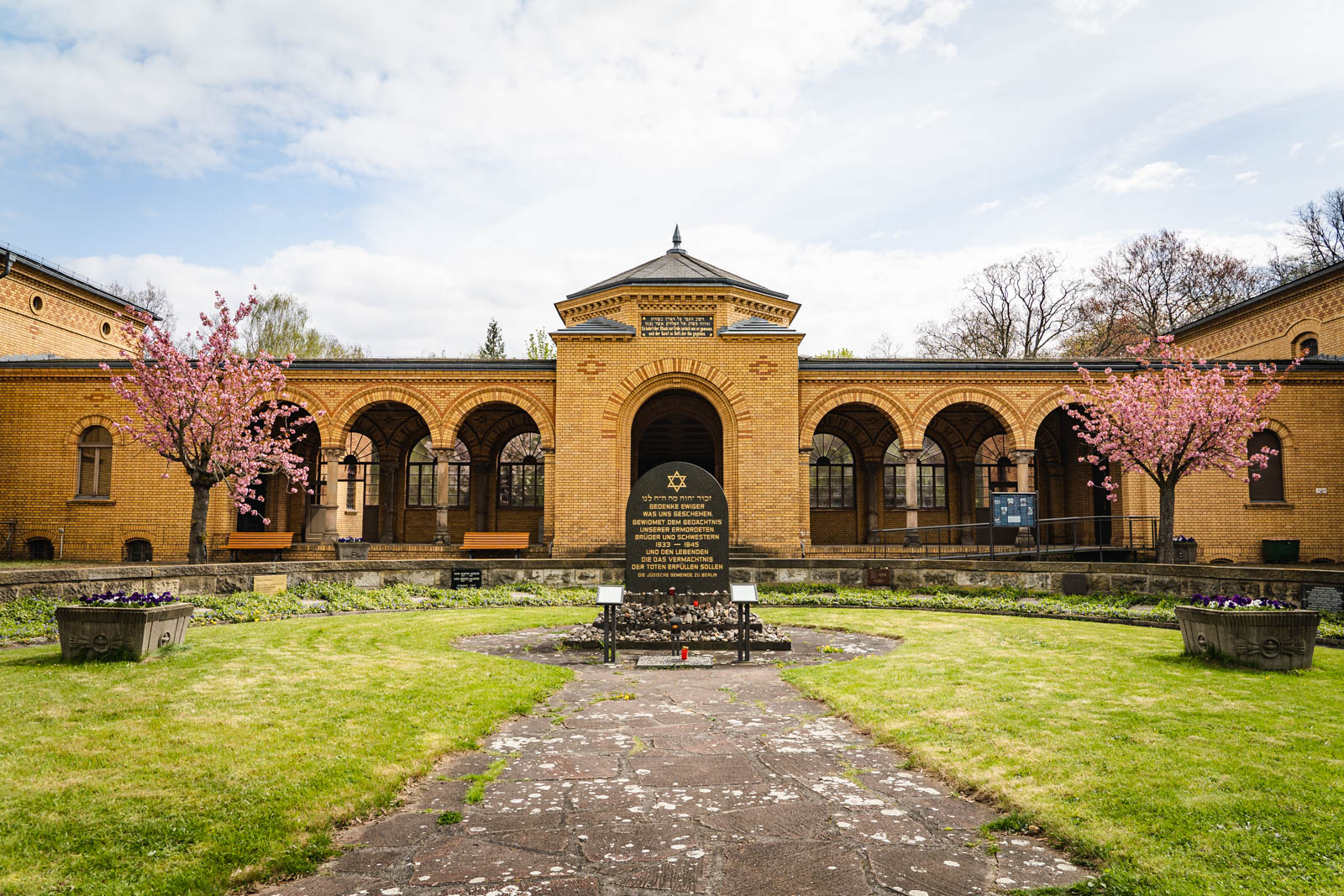
Visit The Jewish Cemetery In Weissensee
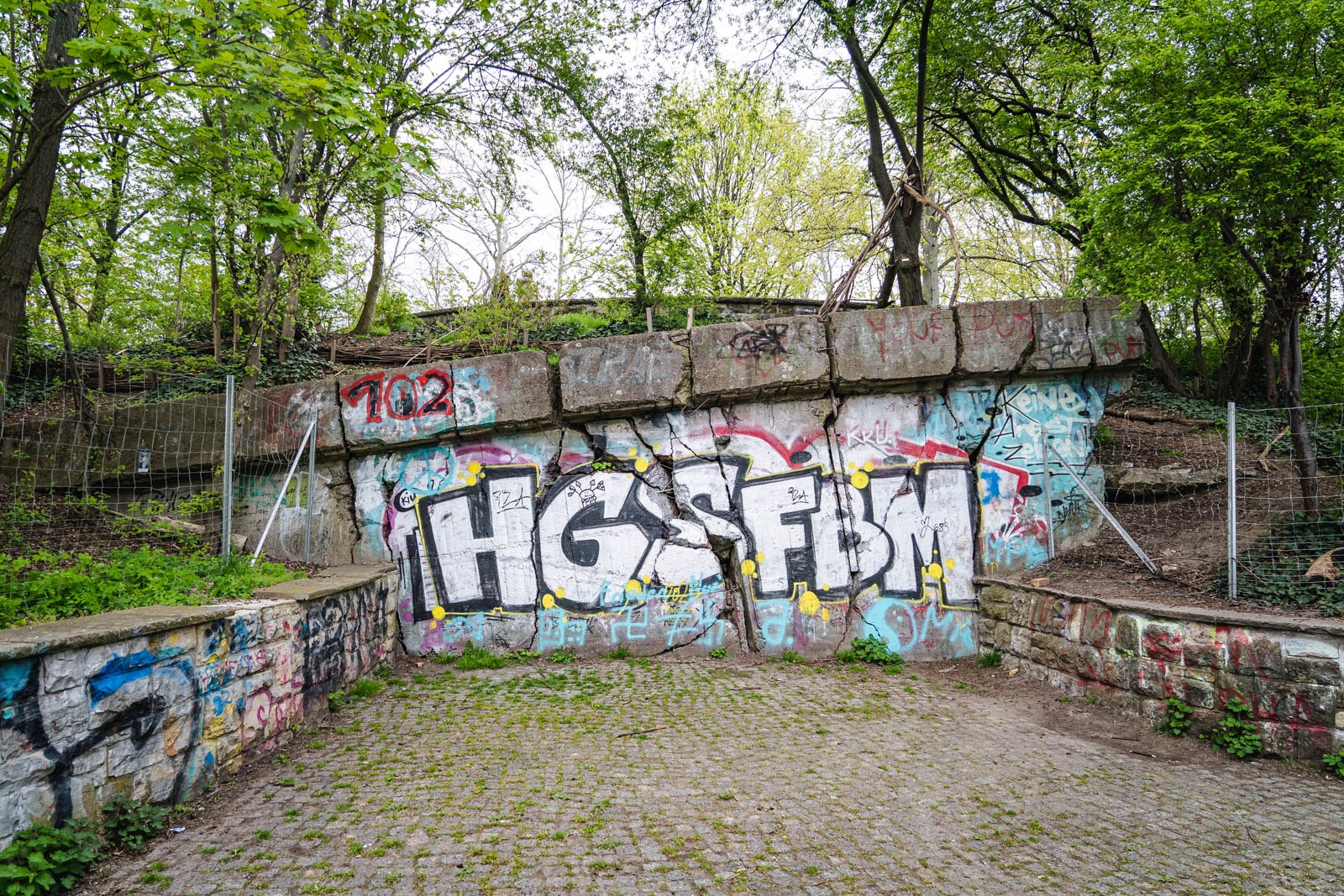
Explore The Volkspark Friedrichshain Flak Tower
You are using an outdated browser. Please upgrade your browser to improve your experience.
new light new tour
From October 8th there will be a new tour for the whole family in Olympiastadion Berlin: The Light Experience Tour gives an insight into the worldwide unique technology and surprises with impressive illuminations. The highlight will be a specially conceived show by lighting designer Mikki Kunttu, who is known for his choereographies for Cirque du Soleil.
The full-color floodlight, the computer-controlled roof light and a spectacular show at the end: The Olympiastadion Berlin has neber been so colorful. Additionally the visitors can get an excklusive view behind the scenes of the five-star stadium and learn a lot of the lighting technology.
The CEO of Olympiastadion Berlin GmbH, Timo Rohwedder, is convinced of the new tour concept: „We want to give our visitors, espcially in the current situation, the opportunity to experience the new light and its diversity – even outside of an event.“
In June 2020 the new, more efficient and worldwide unique lighting system was completed in the Olympiastadion Berlin. The impressive, multi-colored floodlight provides perfect light for every kinf of event – from football games to athletics events and major pop concerts.
The Light Experience Tour takes place in October from Thursday to Sundy at 7pm. The dates for the following months will be announced shortly. Tickets can be purchased at www.olympiastadion.berlin or at the visitor center. Adults pay 15,00 €* (reduced 13,00 €*), children (6 to 14 years) 10,00 €*. The tour takes 90 minutes. A minimum age of 6 years is recommended. Children unter 14 years must be attendet by an adult.
Book tickets and shine
*Prices may differ for online bookings.
Partner & Patrons
- B2RUN BERLIN
- ISTAF Berlin 2024
- Pyronale 2024
- Lollapalooza Berlin
- DFB-Pokal Final 2024
- S 25 Berlin 2024
- UEFA EURO 2024
- Seating Plans
- Disabled Access
- Book your visit/guided tour
- Official VIP ticket shop
- Sightseeing
- Guided Tours
- House Rules
- Newsarchive
- Sustainability
- Conference Packages
- Christmas event
- Movie & Photolocations
- Data protection
- Archive for Paul Scraton
- Share on: Facebook • Twitter • Google+
- ‹ Previous Post • Next Post ›
- Art & Culture
- Food & Drink
- Historical Berlin
- Walking Berlin
- Contributors
Berlin’s Olympic Village
Paul scraton explores berlin’s abandoned 1936 olympic village and the legacy of jesse owens… .
What do you do with a building when it symbolises some of the darkest days of your country’s history?
It’s a common question in Berlin and elsewhere in Germany, and one which was certainly asked of the various venues built for the 1936 Olympics.
Of course, Germany was awarded the Olympics before Hitler and his National Socialist cronies took power, and indeed many of the designs were already in place, but the Olympic Stadium and its surroundings still symbolise a games where Hitler was determined to show to the world the power and the glory of his three-year-old Thousand Year Reich.
When one thinks of what was to follow over the next decade, it is not much consolation that the games were less the “Hitler Olympics” than the “Jesse Owens Show”.
But the African-American athlete Owens’ exploits on the track were more triumphant and glorious than even the best of Leni Riefenstahl’s cinematic efforts; and perhaps it is this history that has allowed the Olympic venues to shake off the taint of their history, most gloriously during the 2006 World Cup where – seventy years after the Olympics – the world came to Germany and was greeted not with swastikas and triumphalism, but a wonderful celebration that even FIFA’s rampant commercialism and Zinedine Zidane’s flying headbutt could not sour.
But if the Olympic Stadium, renovated and restored for 2006, has been granted the opportunity to write a new history on its football pitch and track – and who can forget Usain Bolt’s victories during the 2009 World Championships – what of the other venues built for the 1936 games?
Fourteen kilometres to the west of the stadium and the main Olympic park, beyond the city limits and in the village of Elstal in the Brandenburg countryside, lies the Olympic Village.
This was the home of the athletes for the duration of the games, and a place where, despite Nazi conceptions of race and segregation, 4,000 sportsmen (the women were housed elsewhere) from over 50 nations slept, trained and ate together in the massive House of the Nations canteen.
Much of it is ruins now, though slowly but surely the complex is being patched-up to keep it standing, and certain parts such as the facade of the swimming pool are being restored to their original condition.
We visited on an early summer’s day and paid a bored looking security guard the nominal entry fee to allow us to walk around the grounds pretty much alone. Apart from the larger buildings, such as the House of the Nations, the old swimming pool and the gymnasium, the site is dotted with smaller barracks-like buildings in which athletes were housed.
Some are crumbling, some no longer standing, whilst on others the paint is only slightly peeling. Only one of the athlete residences, which houses the Jesse Owens exhibition, has been properly fixed up, and you can even take a look inside.
It remains a somewhat spooky place. During the long years of socialism, when Elstal and the surrounding countryside was very much a part of the German Democratic Republic, the village was used by the Soviet Army until their withdrawal from German soil in 1992.
They built a series of Plattenbauen – those classically communist pre-fabricated housing blocks – for their soldiers, which now loom amongst the trees in ghostly abandonment. You have the feeling, as you walk around the complex, of being in a place that is lost in its various histories, discarded now that the regimes that built and maintained these grounds are long gone. Although parts have been reconstructed, it is in its abandonment that the village draws its fascinating aura.
Still, the Olympic Village has not been completely left to its memories and ghosts, and the cinder track is occasionally used for school sporting events. And so it should, for can there be more inspiration for a young athlete than the sense of pounding the same ground as the great Jesse Owens?
There is so much power in the memory of one American man and his achievements: enough to rehabilitate these buildings so symbolic of a murderous regime, his part in history allowing us almost a hundred years later to find something positive amongst these ruins, to allow us to rebuild and renovate and celebrate at least one part of the 1936 Olympics.
A powerful achievement for a man who, due to segregation back home, had to ride in the service elevator at the New York Astoria Hotel in order to attend a reception in his honour following his success in Berlin. According to Albert Speer, Hitler was distinctly unimpressed with Owens’ triumph, and discussed the banning of black athletes in future games.
There are many ways to beat an evil ideology such as Nazism. One small victory remains the fact that the 1936 Olympics are more famous for the achievements of a black man than anything else; another is that, 73 years later, Usain Bolt sprints down that same track towards gold medals and world records; and yet another is that, when they play in Berlin, the members of the German National Football team – who come from a variety of backgrounds – take to the field in the Olympic Stadium all ready to play for the same colours, the same flag and the same anthem.
Visitor Information
The Olympic Village can be reached by regional train from Berlin to Elstal (followed by a 2km walk). Opening times, entry prices and tours seem to be constantly changing—sometimes it isn’t open to the public at all. Check here to find current information.
By Paul Scraton on September 7, 2012, in Historical Berlin , Off The Beaten Track Updated on: June 7, 2020 More Paul Scraton 5 minutes
Other posts by Paul Scraton
The peace race: socialism’s grand cycling tour.
Paul Scraton on one of East Germany's most significant sporting events...
Springsteen & The Wall
Paul Scraton on Bruce Springsteen's 1988 East Germany concert...
The Road To Reunification
Paul Scraton looks at Germany's somewhat rocky road to reunification...
At the end of the Chausseestraße
Paul Scraton explores the lives and stories that intersect at the end of the Chausseestraße...
A Stroll Through Hohenschönhausen
Paul Scraton explores history and memories along the Konrad-Wolf-Straße...
Remembrance at the Reichskriegsgericht
Marcel Krueger visits Berlin's former Reichskriegsgericht to pay tribute to a murdered family member...
Berlin’s Historic Market Halls
Ian Farrell explores the history and present of Berlin’s 19th century Markthallen...
Inside Tempelhof Airport
Photographer Christopher Dodd gets locked inside Tempelhof Airport.
Stories from the City
To celebrate Slow Travel Berlin's fifth birthday: a curated anthology of articles and photography on a wide range of topics and places that you won’t find in the guidebooks.
100 Favourite Places
Instead of highlighting the city’s hippest ‘hotspots’, we’ve taken a more patient and personal approach to bring you 100 special places, many of which would not be mentioned in conventional guides.
Mauerweg: Stories From The Berlin Wall Trail
A documented walk around the entire 160km length of the Mauerweg (Berlin Wall Trail)
Copyright © 2024 Slow Travel Berlin All rights reserved | Log in
UEFA EURO 2024 Trophy Tour continues through Germany
Thursday, April 25, 2024
Article summary
The Henri Delaunay Cup is making its way through Germany ahead of UEFA EURO 2024, and fans in the host cities of Frankfurt, Cologne, Dusseldorf, Dortmund and Gelsenkirchen have now seen the iconic trophy up close.
Article top media content

Article body
We’re just seven weeks away from the start of UEFA EURO 2024, and the festivities have already started in Germany as the Trophy Tour has been continuing to make its way through the ten host cities.
The event kicked off in Stuttgart on 22 March and has since been to Frankfurt, Cologne, Düsseldorf, Dortmund and Gelsenkirchen, with fans across western Germany getting the chance to see the iconic Henri Delaunay trophy and meet some special guests.
Excitement builds across the country
The second stop on the Trophy Tour was Frankfurt, where the silverware embarked on a photo tour through the city, including Frankfurt Arena, which will host five matches at UEFA EURO 2024.
The trophy was then put on display at the MyZeil shopping centre, where tournament ambassador Célia Šašić was in attendance alongside Host City ambassador and former Eintracht Frankfurt midfielder Alexander Meier, who signed autographs for fans before taking part in a Q&A session with other local guests. Meanwhile, 11-time table football world champion Chris Marks showed off his skills, with two more tables available for fans to use.
The Tour then moved onto Cologne, which will also host five EURO 2024 matches. Tournament director Philipp Lahm accompanied the trophy on a photo tour ending at the German Sports & Olympic Museum, where fans were able to take pictures with the cup. Lahm then took part in a talk with Mayor Henriette Reker and Host City ambassador Toni Schumacher, who won the 1980 UEFA European Championship with West Germany.
In Düsseldorf, Lahm met Host City ambassadors Sandra Mikolaschek, a two-time Paralympian in para table tennis, and Selin Oruz, Olympic bronze medallist in hockey, following a photo tour taking in the sights of the city and inviting local football clubs to join in the fun. The Merkur-Spiel Arena will stage five EURO 2024 games, including the third quarter-final on Saturday 6 July.
The next stop was Dortmund, where fans were treated to an afternoon of fun family-friendly activities at Friedensplatz, including football-themed games and plenty of food and drink options. The trophy was paraded through the city, with stops including the German Football Museum and BVB Stadion, which will host six EURO 2024 matches, culminating in the second semi-final on Wednesday 10 July.
The trophy then made the short trip to Gelsenkirchen and the Arena AufSchalke, where four EURO 2024 matches are scheduled to take place. It was greeted at the stadium by Host City ambassador, 43-cap Germany forward and Schalke 04 legend Gerald Asamoah. Along with former teammate Émile Mpenza, Asamoah took part in a penalty shootout challenge before watching a tournament for local youth teams with mascot Albärt. Schalke players were also in attendance and signed autographs for the children, who could take photos with the trophy.
The Trophy Tour’s final stops
The UEFA EURO 2024 Trophy Tour now heads to the capital Berlin before making its last three stops in Leipzig, Hamburg and Munich, where it ends on 14 May, exactly a month before the tournament kicks off.
Through its Environmental, Social and Governance (ESG) Strategy , UEFA EURO 2024 aims to be a reference point for sustainability in the world of sports, and a driving force for sustainable development in Germany and beyond. The Trophy Tour is playing an important role by bringing the festivities to supporters across Germany, while fostering ties with local organisations and supporting grassroots football.
Keep up to date with all the latest UEFA EURO 2024 news .
- Election 2024
- Entertainment
- Newsletters
- Photography
- Personal Finance
- AP Investigations
- AP Buyline Personal Finance
- AP Buyline Shopping
- Press Releases
- Israel-Hamas War
- Russia-Ukraine War
- Global elections
- Asia Pacific
- Latin America
- Middle East
- Election Results
- Delegate Tracker
- AP & Elections
- Auto Racing
- 2024 Paris Olympic Games
- Movie reviews
- Book reviews
- Personal finance
- Financial Markets
- Business Highlights
- Financial wellness
- Artificial Intelligence
- Social Media
Rafael Nadal poised for Laver Cup swansong in Berlin in September
FILE - Spain’s Rafael Nadal attends a training session ahead of the Laver Cup tennis tournament in London, England, Thursday, Sept. 22, 2022. Rafael Nadal says he will play the Laver Cup in Berlin in September in what may be one of the 22-time Grand Slam champion’s last tournaments. (AP Photo/Kin Cheung, File)
- Copy Link copied
BERLIN (AP) — Rafael Nadal said Monday he will play at the Laver Cup in Berlin in September in what may be one of the 22-time Grand Slam champion’s last tournaments.
Nadal has signaled 2024 may be his last year on tour and said last week that his second-round loss to Alex de Minaur at the Barcelona Open, which he has won 12 times, was “probably my last match here.”
“At this stage in my career I really want to go out there and make the most of every opportunity I am given,” Nadal said in a statement.
The 37-year-old Spanish superstar has long struggled with injuries and has played just five competitive matches this year, three in Brisbane in January and two in Barcelona last week.
The Laver Cup, to be held from Sept. 20-22, is an indoor hard-court men’s competition pitting Team Europe against Team World in a format similar to that of golf’s Ryder Cup.
Nadal and Roger Federer teamed up in the doubles at the 2022 Laver Cup in London for the Swiss great’s last match before retirement.
“I am very happy to be playing Laver Cup in Berlin for Team Europe,” Nadal said. “I have some really special memories from my Laver Cup experiences, including all the emotions from London two years ago playing alongside Roger for the last time.”
AP tennis: https://apnews.com/hub/tennis
The Olympics are nearly here. For a weary world, they can't come soon enough.
Start the countdown clock. In exactly 100 days, more than 10,000 athletes and tens of thousands of spectators will converge on Paris for the start of the 33rd Summer Olympic Games , a 16-day extravaganza that marks the first time the City of Lights has hosted the world’s pre-eminent sports festival in a century.
In keeping with the slogan for this year’s Olympics, “Games Wide Open,” the opening ceremony will take place outside a stadium setting for the first time. The plans are ambitious: a 3.5-mile boat parade along the Seine before as many as 325,000 onlookers on the river’s banks. The hundreds of athletic events — hosted by dozens of venues across Paris and other cities in metropolitan France — will likewise be open to large crowds.
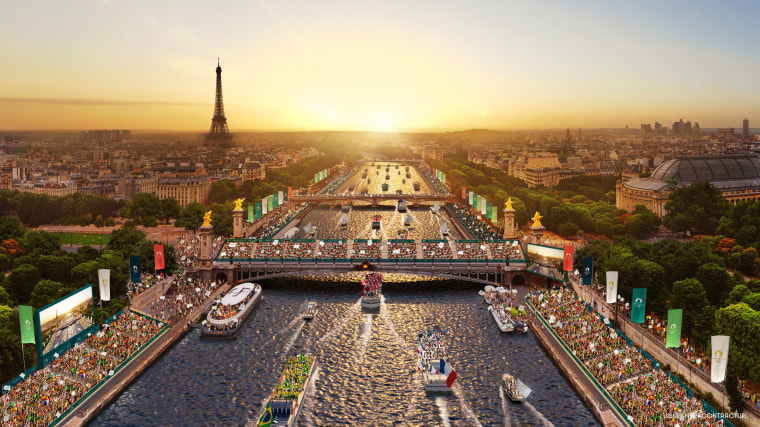
In many respects, the Paris Games promise to be one of the most elaborate cultural rituals since Covid swept across the world beginning in late 2019. Health restrictions forced the organizers of Tokyo 2020 and Beijing 2022 to sharply limit the scale of the festivities, with events largely closed to the public. Paris 2024, powered in part by pent-up demand for communal experiences, symbolizes an international post-pandemic vibe shift.
More Olympics coverage
- Power move : Break-dancing busts into the Olympics for the first time
- Take a tour : Take a tour: Iconic venues will provide a distinctly French backdrop at the Olympics
- Photos : See how Paris has evolved from the 1924 Summer Olympics to today
- Quiz : Swimming. Cycling. Plunge for distance? Test your knowledge of Olympic sports
But with that spirit of openness comes all-too-familiar challenges. The festivities in Europe’s most densely populated city are shadowed by security concerns . The International Olympic Committee and French officials have insisted that they are putting strict security measures in place. Yet the recent history of violence in France — including the 2015 terror attack in Paris that left 138 people dead and at least 416 injured — stalks public consciousness there.
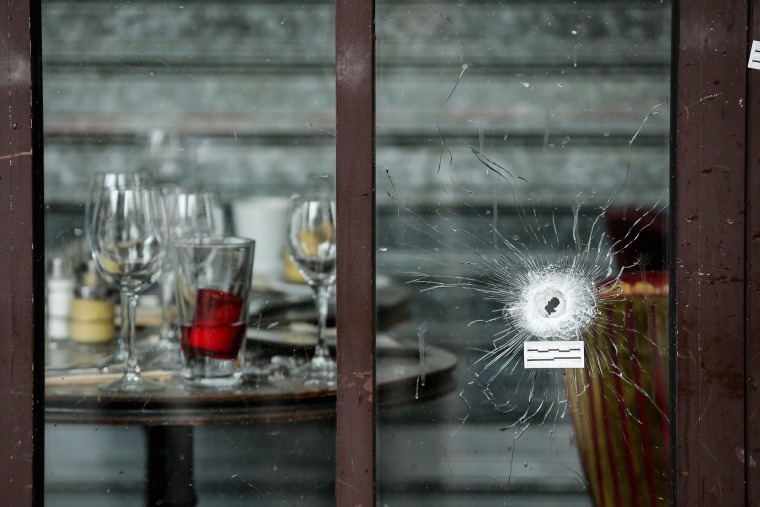
The geopolitical backdrop for the Paris Games is no less troubling. The war between Israel and Hamas recently crossed the six-month mark, raising fears of a protracted conflict and wider regional instability. The devastation in the Gaza Strip has provoked international outrage, isolating Israel on the global stage. Meanwhile, Russia continues to gain ground in its military offensive against Ukraine as some Western nations worry about the rise of authoritarianism.
These international crises could come into play during the Games in the form of protests and other political demonstrations.
“It is certain that the international context is particularly tense today,” Tony Estanguet, president of the Games’ organizing committee, recently told Radio France . “I believe in this universal event. It’s up to us to preserve, to talk about sport and not to politicize the subject too much.”
Nevertheless, Olympics organizers are determined to put on a show that stuns the throngs assembled on the boulevards of Paris, not to mention the millions of people expected to watch the Games unfold on their televisions and mobile devices. If the surge of enthusiasm for the Super Bowl, Taylor Swift, March Madness and the solar eclipse is any guide, then audiences are craving spectacle — and the Paris Games could be just the ticket.
Going for the gold
The scale of the Paris Games is immense: nearly 40 sports and more than 300 events hosted in at least 35 venues in Paris and other cities across metropolitan France. Following two Games that were hampered by Covid protocols and other tight restrictions, Paris could resemble a colossal international party, heralded by five Olympic rings (fashioned from recycled French steel) that will be displayed on the south side of the Eiffel Tower.
“The last two Olympics certainly didn’t have the look and feel of what we expect from the Games,” said Jeremy Fuchs, a sports writer and the author of a 2021 book about the history of the Olympics. “I would expect Paris to go all out. … With fans back in the stands, we should expect one of the more raucous Games in recent memory.”
The iconic landmarks will be immediately recognizable to worldwide TV viewers. Beach volleyball players will show off their jump serves at a temporary outdoor arena at the Champ de Mars, a large public park at the foot of the Eiffel Tower. Equestrian and modern pentathlon competitions will take place at the Palace of Versailles , one of the emblems of French royal history. The 124-year-old Grand Palais will host fencing and taekwondo.
At least one venue that hosted events during the 1924 Summer Olympics in Paris will be put to use again: Stade Yves-du-Manoir, the home of the opening ceremony 100 years ago. (The stadium also hosted some of the races depicted in the Oscar-winning film “Chariots of Fire.”) This time around, the 117-year-old arena will stage field hockey competitions.
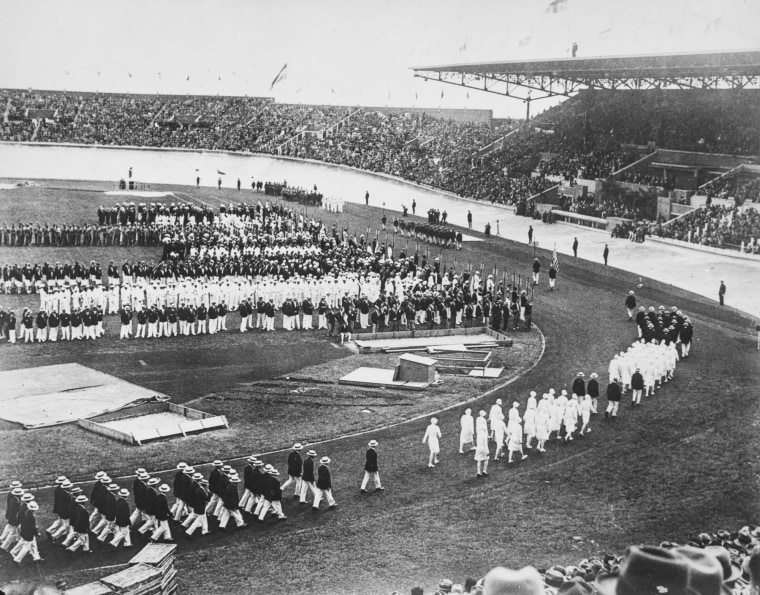
The sports themselves are sure to draw wide attention, from basketball and boxing to sailing and swimming. Breaking (also known as break dancing) is set to make its Olympics debut, and three recently introduced competitions — sport climbing, skateboarding and surfing — will be integrated into the Paris Games, too. (Karate, softball and baseball won’t be part of the lineup.)
The vast majority of events are set to unfold across France, though there is one exception. The surfing competition will take place in a village on the southwestern coast of Tahiti. Paris organizers chose to hold the surfing events on the French Polynesian island because it “offers an opportunity to engage French overseas territories and their communities in the Olympic Games — for the first time in history — while showcasing France’s rich and diverse heritage.”
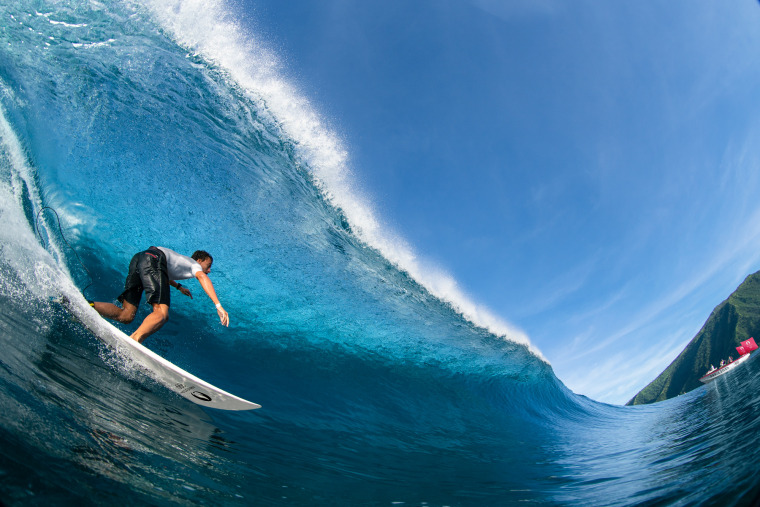
Paris organizers have signaled that they are attempting to reach younger audiences by featuring sports that are “closely associated with youth and reward creativity and athletic performance.” But given that relatively few people in their teens and 20s watch traditional linear television, the IOC faces a steep climb in convincing viewers in that age bracket to tune in, according to David Goldblatt, the author of “The Games: A Global History of the Olympics.”
This year’s Games will be more widely accessible to at-home viewers thanks in part to streaming. Peacock, the streaming platform owned by NBCUniversal, plans to invest heavily in live coverage of the festivities, including a “multiview” feature that allows subscribers to watch up to four competitions at the same time.
Superstar personalities could help make the case for the Games as must-see TV. Simone Biles, the seven-time Olympic medal-winning gymnast, hopes to compete in Paris. The list of U.S. athletes who could make waves also includes swimmer Katie Ledecky as well as track-and-field sprinters Noah Lyles and Sha’Carri Richardson.
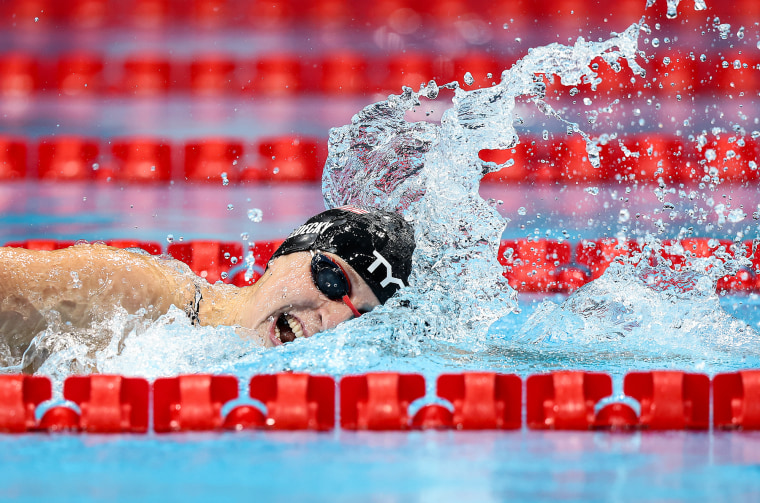
David Wallechinsky, a former president of the International Society of Olympic Historians and the author of “The Complete Book of the Olympics,” said he was most excited about the track-and-field competitions because he believes the sport has the most universal appeal — unlike, say, “swimming the 400-meter medley or participating in equestrian dressage.”
In total, more than 200 countries — known in IOC parlance as national olympic committees, or NOCs — plan to send their most elite athletes to Paris, where most will check into the Olympic Village on the banks of the Seine. Russia and Belarus were banned from the Olympics after Vladimir Putin launched a full-scale invasion of Ukraine on Feb. 24, 2022 — four days after the conclusion of the Winter Olympics in Beijing.
The final stretch
In recent months, preparations for the Games have arguably been overshadowed by the grinding realities of war and humanitarian disaster. Paris 2024 is just the latest in a long line of Olympic Games that have taken place against a backdrop of geopolitical turmoil, according to Wallechinsky, who pointed to several key examples.
The 1936 Summer Olympics were hosted by Berlin and opened by Adolf Hitler three years before the outbreak of World War II. Twenty-nine countries boycotted the 1976 Summer Olympics in Montreal to protest the fact that New Zealand’s rugby team had toured apartheid South Africa. The massacre of 11 Israeli athletes and coaches by Palestinian members of the Black September terrorist organization cast a pall over the 1972 Summer Games in Munich and underscored the violent tensions that are often inseparable from the athletic competitions at the heart of the Olympics.
In the Cold War era, the U.S. led a boycott of the 1980 Summer Olympics in Moscow and the former Soviet Union sat out the 1984 Summer Olympics in Los Angeles.
In the lead-up to the Paris Games, France announced it would deploy 45,000 police, military officers and army troops across the country. The country has requested reinforcements from 46 foreign partners — a “classic approach adopted by host countries when organizing major international events,” the Interior Ministry has said. Everyone involved in the Games — security officials, building workers, volunteers — will be put through background checks, too.
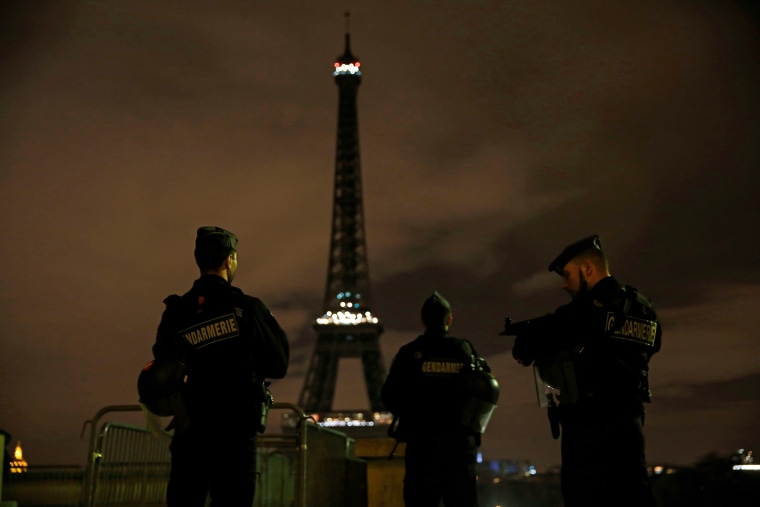
French government officials also decided to cap the number of people allowed to watch the opening ceremony at 325,000. Two years ago, organizers had proposed making the July 26 opening festivities accessible to as many as 600,000 people, a grand gathering that would span 6 kilometers (roughly 3.7 miles), stretching from the east of Paris to the Trocadéro.
In response to a request for comment on the security fears, an IOC spokesperson said French authorities had informed the committee that “they have been working for a couple of years under the assumption that the highest security measures will be required.” The spokesperson said that, per usual practices, “there is also very close international cooperation.”
“Based on this and the regular reports the IOC receives from them, we have full confidence in the French authorities and their strong collaboration with their international partners,” the spokesperson added.
In the run-up to the opening ceremony, organizers are also confronting markedly less existential issues — including high levels of “pollution of fecal origin” and other bacteria in the Seine , an environmental headache that might force officials to nix the triathlon swimming section.
“We are working hard on it. You know it’s one of the bigger challenges,” Estanguet told reporters this month.
In the end, though, spectators around the world will likely be focused on the pageantry and competition, savoring the first full-fledged Olympic Games in more than half a decade.
Disclosure: NBC News parent company NBCUniversal owns NBC Sports and NBC Olympics. NBC Olympics is the U.S. broadcast rights holder to all Summer and Winter Games through 2032.
Daniel Arkin is a national reporter at NBC News.
Sunday, April 28, 2024 11:18 am (Paris)
- International
- Paris 2024 Olympics
Greece hands Olympic flame to 2024 Paris Games hosts
The Paris Olympics flame was formally handed to French organizers in the all-marble stadium where the first modern Games were held in Athens in 1896.
Le Monde with AP and AFP
Time to 2 min.
- Share on Twitter
- Share on Messenger
- Share on Facebook
- Share by email
- Share on Linkedin
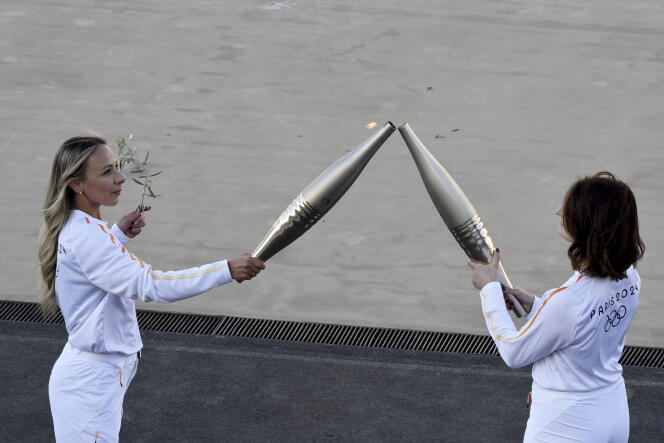
Greece on Friday, April 26, handed over the Olympic flame of the 2024 Games to Paris organisers in a ceremony at the Athens marble stadium where the competition was revived nearly 130 years ago.
Hellenic Olympic Committee chairman Spyros Capralos handed the torch to Paris Olympics chief organiser Tony Estanguet at the Panathenaic Stadium, where the first modern Olympics were held in 1896.
Estanguet in a speech said the goal for Paris was to organise "spectacular but also more responsible Games, which will contribute towards a more inclusive society."
Organisers want to ensure "that the biggest event in the world plays an accelerating role in addressing the crucial questions of our time," said Estanguet, a member of France's Athens 2004 Olympics team who won gold in the slalom canoe event.
A duo of French champions, Beijing 2022 ice dance gold medallist Gabriella Papadakis and former swimmer Beatrice Hess, one of the most successful Paralympians in history, carried the flame during the final relay leg into the Panathenaic Stadium.
Nana Mouskouri, the 89-year-old Greek singer with a worldwide following, performed the anthems of France and Greece at the ceremony.
Aboard a Belem
After spending the night at the French embassy in Athens, the flame on Saturday will begin its journey to France on board the 19th-century three-masted barque Belem.
On Sunday, the ship will pass from the Corinth Canal – a feat of 19 th -century engineering constructed with the contribution of French banks and engineers.
The Belem is set to reach Marseille – a city founded by ancient Greek colonists around 600 BCE – on May 8.
Over 1,000 vessels will accompany its approach to the harbour, local officials have said.
French swimmer Florent Manaudou will be the first torchbearer in Marseille. His sister Laure was the second torchbearer in ancient Olympia, where the flame was lit on April 16.
Ten thousand torchbearers will then carry the flame across 64 French territories.
An ancient tradition
It will travel through more than 450 towns and cities, and dozens of tourist attractions during its 12,000-kilometre (7,500-mile) journey through mainland France and overseas French territories in the Caribbean, Indian Ocean and Pacific.
The flame was kindled on April 16 at Olympia in southern Greece, where the ancient games were held for more than 1,000 years from about 776 BC to AD 393. On July 26 it will form the centrepiece of the Paris Olympics opening ceremony.
A French historical monument launched just weeks after the Athens 1896 Games were held, the Belem carried out trade journeys to Brazil, Guyana and the Caribbean for nearly two decades.
Hours before the handover ceremony, the flame passed from Marathon, the town where the classic 42-kilometre endurance race, a key Olympic event, sets off annually.
The torch harks back to the ancient Olympics when a sacred flame burned throughout the Games. The tradition was revived in 1936 for the Berlin Games.
During the 11-day relay on Greek soil, some 600 torchbearers carried the flame over a distance of over 5,000 kilometres (3,100 miles) through over 50 towns and cities.
Lecture du Monde en cours sur un autre appareil.
Vous pouvez lire Le Monde sur un seul appareil à la fois
Ce message s’affichera sur l’autre appareil.
Parce qu’une autre personne (ou vous) est en train de lire Le Monde avec ce compte sur un autre appareil.
Vous ne pouvez lire Le Monde que sur un seul appareil à la fois (ordinateur, téléphone ou tablette).
Comment ne plus voir ce message ?
En cliquant sur « Continuer à lire ici » et en vous assurant que vous êtes la seule personne à consulter Le Monde avec ce compte.
Que se passera-t-il si vous continuez à lire ici ?
Ce message s’affichera sur l’autre appareil. Ce dernier restera connecté avec ce compte.
Y a-t-il d’autres limites ?
Non. Vous pouvez vous connecter avec votre compte sur autant d’appareils que vous le souhaitez, mais en les utilisant à des moments différents.
Vous ignorez qui est l’autre personne ?
Nous vous conseillons de modifier votre mot de passe .
Lecture restreinte
Votre abonnement n’autorise pas la lecture de cet article
Pour plus d’informations, merci de contacter notre service commercial.
- Breaking News
Greece hands Olympic flame to 2024 Paris Games hosts
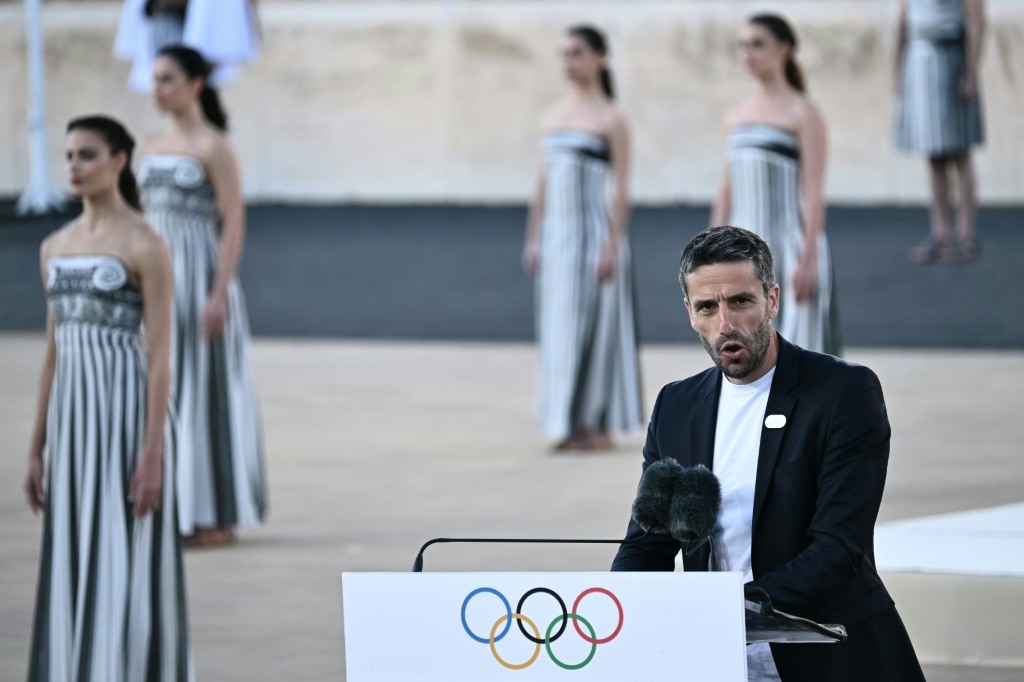
‘Unreal’: Drama delivers stunning Aussie LIV victory
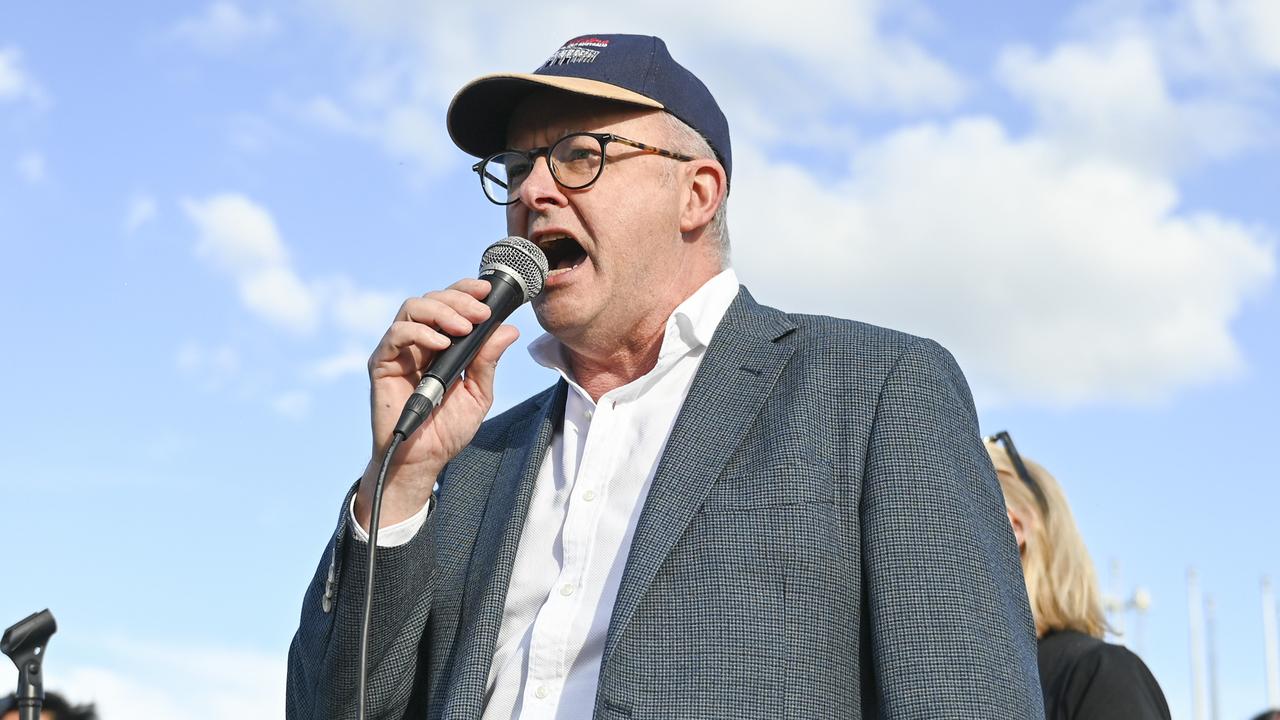
Albo’s angry words for Aussie men

Teen’s alleged act that sparked mall panic
Greece on Friday handed over the Olympic flame of the 2024 Games to Paris organisers in a ceremony at the Athens marble stadium where the competition was revived nearly 130 years ago.
Hellenic Olympic Committee chairman Spyros Capralos handed the torch to Paris Olympics chief organiser Tony Estanguet at the Panathenaic Stadium, where the first modern Olympics were held in 1896.
Estanguet in a speech said the goal for Paris was to organise "spectacular but also more responsible Games, which will contribute towards a more inclusive society."
Organisers want to ensure "that the biggest event in the world plays an accelerating role in addressing the crucial questions of our time," said Estanguet, a member of France's Athens 2004 Olympics team who won gold in the slalom canoe event.
A duo of French champions, Beijing 2022 ice dance gold medallist Gabriella Papadakis and former swimmer Beatrice Hess, one of the most successful Paralympians in history, carried the flame during the final relay leg into the Panathenaic Stadium.
Nana Mouskouri, the 89-year-old Greek singer with a worldwide following, performed the anthems of France and Greece at the ceremony.
After spending the night at the French embassy in Athens, the flame on Saturday will begin its journey to France on board the 19th-century three-masted barque Belem.
On Sunday, the ship will pass from the Corinth Canal -- a feat of 19th century engineering constructed with the contribution of French banks and engineers.
The Belem is set to reach Marseille -- a city founded by ancient Greek colonists around 600 BCE -- on May 8.
Over 1,000 vessels will accompany its approach to the harbour, local officials have said.
French swimmer Florent Manaudou will be the first torch bearer in Marseille. His sister Laure was the second torch bearer in ancient Olympia, where the flame was lit on April 16.
Ten thousand torchbearers will then carry the flame across 64 French territories.
It will travel through more than 450 towns and cities, and dozens of tourist attractions during its 12,000-kilometre (7,500-mile) journey through mainland France and overseas French territories in the Caribbean, Indian Ocean and Pacific.
On July 26 it will form the centrepiece of the Paris Olympics opening ceremony.
A French historical monument launched just weeks after the Athens 1896 Games were held, the Belem carried out trade journeys to Brazil, Guyana and the Caribbean for nearly two decades.
Hours before the handover ceremony, the flame passed from Marathon, the town where the classic 42-kilometre endurance race, a key Olympic event, sets off annually.
The torch harks back to the ancient Olympics when a sacred flame burned throughout the Games. The tradition was revived in 1936 for the Berlin Games.
During the 11-day relay on Greek soil, some 600 torchbearers carried the flame over a distance of over 5,000 kilometres (3,100 miles) through over 50 towns and cities.
Two horror drives from Cameron Smith in Adelaide nearly cost his all-Australian team before a third chance delivered the sweetest LIV victory in Adelaide.
The Prime Minister was met with jeers and boos as he delivered a fiery speech demanding widespread change in Australian society to beat the scourge of gender-based violence.
A teenager has been charged after an alleged robbery plunged a busy shopping centre into chaos.

IMAGES
VIDEO
COMMENTS
Our tour guides will take you on an exciting journey through time through the history of today's ultra-modern stadium. Thematic tour architecture The Olympiastadion Berlin is part of the Olympic Grounds ('Olympiagelände'; originally: 'Reichssportfeld') and was built from 1934 to 1936 for the 1936 Olympic Games.
The Olympiastadion Berlin - Home of records and emotions. Here you can find every information about Sightseeing, Big Events, Concerts and Business Events ... Pyronale 2024; Lollapalooza Berlin; DFB-Pokal Final 2024; S 25 Berlin 2024; UEFA EURO 2024; Sightseeing. Sightseeing; Guided Tours; 360°-Tour; FAQ; Stadium. Facts & Figures; History; The ...
A english-guided Highlight-Tour at Olympic stadium - a must-have tour. A 60-minute english-guided tour of the Olympic Stadium in Berlin in areas not otherwise accessible to the public. Visit the sites of the 2006 FIFA World Cup, the World Athletics Championships 2009, the VIP areas, dressing rooms and the underground warm-up rooms, while ...
This tour will take you from Berlin to Olympiastadion in a VW Bus, explaining some of the histories about the location along the way. Once you're there, you will learn about what happened during the Olympic games which were held here in 1936. Entrance fees are not included. Olympic Games 6-Hour Tour. €101 per person; Duration: 6 hours
Your entrance to the Olympic Stadium Berlin: Since its reopening in 2004, around 300,000 visitors from all over the world have visited to the Olympic Stadium Berlin every year, making the five-star stadium one of the top sightseeing attractions in Berlin. ... During the unguided tour you can move freely around the stadium grounds, walk around ...
Entrance, Tickets & Tours for the Olympiastadion Berlin. Entrance: Olympiastadion Berlin is open daily. From November to March it is open from 10:00 -16:00; from April to October from 9:00 - 19:00. In August, the opening hours are 9:00 am - 8:00 pm. Tickets: Tickets for the self-guided sightseeing are available at the Visitor Center in front of ...
Berlin: Olympic Stadium Guided Tour. Explore the Olympic Stadium in Berlin on a guided tour and discover the site of many historic sporting events of the 20th century. Access areas that are usually closed to the public and learn more about the venue and its rich history. Discover the stadium which is now home to the Hertha Berlin football team.
⭐ Berlin: Olympic Stadium tour (guided or independent). Explore the legendary Olympiastadion Berlin on your own or with a guide! Tickets 🎫 Guided sightseeing tour: Adult (15+) - one-way ticket 🎫 Guided sightseeing tour: Child (6-14) - one-way ticket 🎫 Guided sightseeing tour: Reduced - single ticket*
6. Berlin TV Tower: Fast View Entry Ticket with Afternoon Tea. Journey high above Berlin and visit the 200-meter tall TV Tower at Alexanderplatz. With this exclusive GetYourGuide activity, enjoy priority entrance and experience a fantastic view of the city from your window seats at the "Sphere" restaurant.
The tour crescendos at the Berlin Olympic Stadium, where the cheers of historic victories linger in the air. This isn't just a stroll through history; it's an immersive celebration of the Euro Championships 2024, fusing the tournament's excitement with Berlin's lively football spirit. Lace-up your metaphorical boots and join us for a football ...
Top ways to experience Olympiastadion Berlin and nearby attractions. Football Tour EURO 2024. Historical Tours. from. $27.25. per adult. City Sightseeing Berlin Hop-On Hop-Off Bus Tour. 603.
The Origins of the Berlin Olympic Stadium. The Berlin Olympic Stadium, also known as Olympiastadion in German, was constructed between 1934 and 1936 by renowned architect Werner March. It was designed to showcase Adolf Hitler's vision of German supremacy during the 1936 Summer Olympics, which were fraught with political and social implications.
1936 Berlin Olympic Games Olympic Torch. The Summer Olympics Torch Relay is the action of taking the olympic flame from Olympia, Greece to its host city. It was the 1936 Berlin Olympics where this tradition first began. The flame was brought from Olympia to the Berlin Olympic Torch which remains a monument in this huge stadium today.
Berlin's Olympiastadion is more than just the home venue for the Bundesliga football club Hertha BSC: In August 2018 athletes fought for medals at the European Athletics Championships in Berlin. And even as a recreational athlete, you have the chance to run through this legendary stadium - for example, at such events as the B2RUN or BIG25.
Berlin: Olympic Stadium Guided Tour. Explore the Olympic Stadium in Berlin on a guided tour and discover the site of many historic sporting events of the 20th century. Access areas that are usually closed to the public and learn more about the venue and its rich history. Discover the stadium which is now home to the Hertha Berlin football team.
Third Reich and Berlin Wall History 3-Hour Bike Tour in Berlin. 70. Recommended. 95% of reviewers gave this product a bubble rating of 4 or higher. Historical Tours. from . £27.97. per adult. The area. Address. ... Worth a visit to the site of the 1936 Nazi olympics, either Olympics, or by attending an event there. ...
The Olympic Stadium in Berlin was designed by German architect Werner March. Its construction began in 1934, under the orders of Adolf Hitler, who sought to use the Olympics as a showcase for Nazi Germany's power and ideals. The stadium was envisioned to be a symbol of architectural prowess and strength, a reflection of Nazi ideology.
Site Of The 1936 'Nazi Olympics'. The 1936 Summer Olympics began on an atypical August day. Dark clouds gathered in the sky over Berlin's Olympic Stadium. Occasional rain harassed the spectators. The doomed Hindenburg airship hovered over the Reichssportfeld, intermittently obscuring the sun and casting a giant shadow across the crowd.
The Light Experience Tour takes place in October from Thursday to Sundy at 7pm. The dates for the following months will be announced shortly. Tickets can be purchased at www.olympiastadion.berlin or at the visitor center. Adults pay 15,00 €* (reduced 13,00 €*), children (6 to 14 years) 10,00 €*. The tour takes 90 minutes.
Photo by Julia Stone. Fourteen kilometres to the west of the stadium and the main Olympic park, beyond the city limits and in the village of Elstal in the Brandenburg countryside, lies the Olympic Village. This was the home of the athletes for the duration of the games, and a place where, despite Nazi conceptions of race and segregation, 4,000 ...
The Trophy Tour's final stops. The UEFA EURO 2024 Trophy Tour now heads to the capital Berlin before making its last three stops in Leipzig, Hamburg and Munich, where it ends on 14 May, exactly ...
BERLIN (AP) — Rafael Nadal said Monday he will play at the Laver Cup in Berlin in September in what may be one of the 22-time Grand Slam champion's last tournaments. Nadal has signaled 2024 may be his last year on tour and said last week that his second-round loss to Alex de Minaur at the Barcelona Open, which he has won 12 times, was ...
Start the countdown clock. In exactly 100 days, more than 10,000 athletes and tens of thousands of spectators will converge on Paris for the start of the 33rd Summer Olympic Games, a 16-day ...
The tradition was revived in 1936 for the Berlin Games. During the 11-day relay on Greek soil, some 600 torchbearers carried the flame over a distance of over 5,000 kilometres (3,100 miles ...
The tradition was revived in 1936 for the Berlin Games. During the 11-day relay on Greek soil, some 600 torchbearers carried the flame over a distance of over 5,000 kilometres (3,100 miles ...